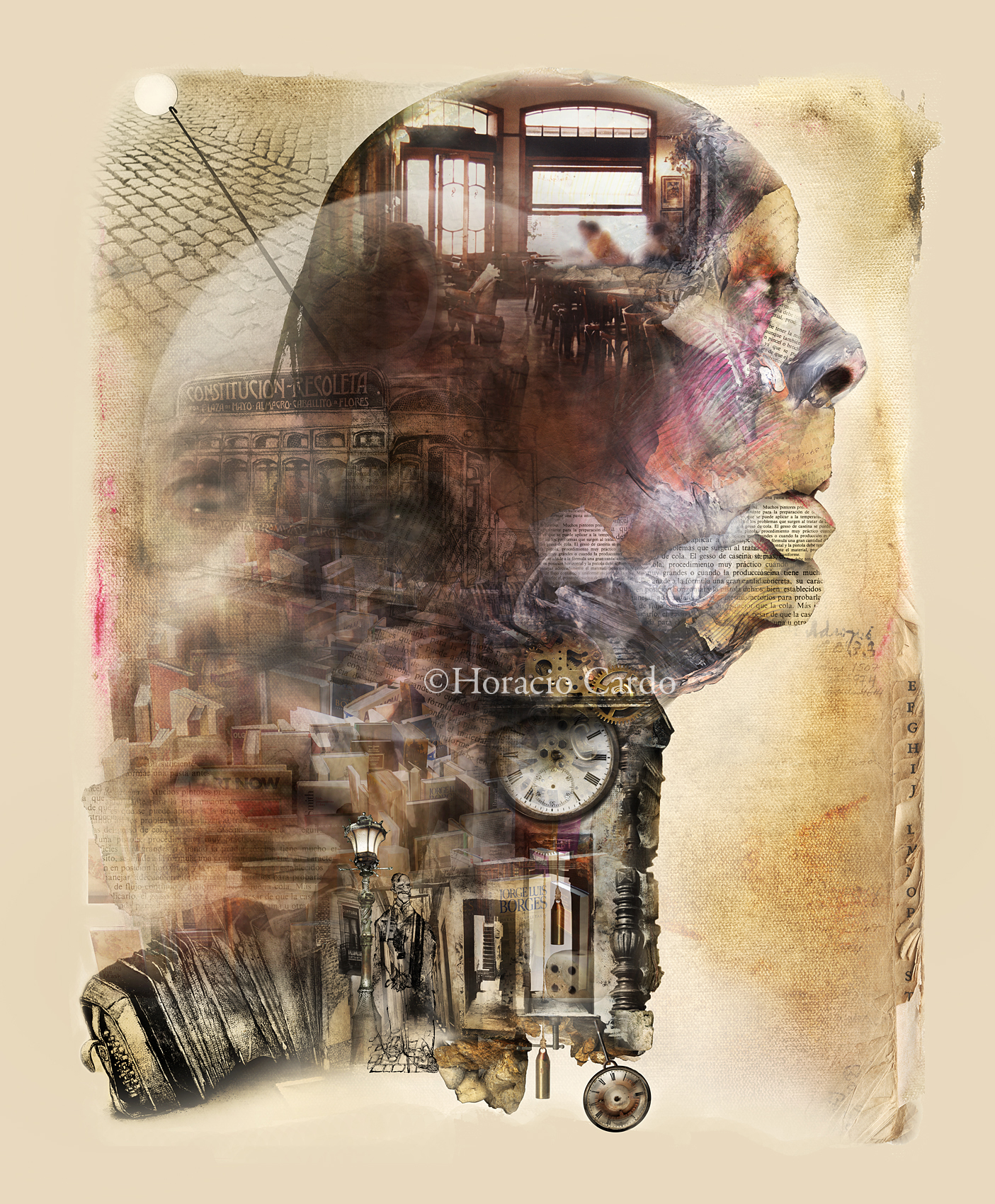
Facts are not important
When they occur.
They are important as a memory,
That possibly deforms them,
Then polishes, loses, recovers and converts them,
Into an aesthetic theme.
Jorge Luis Borges
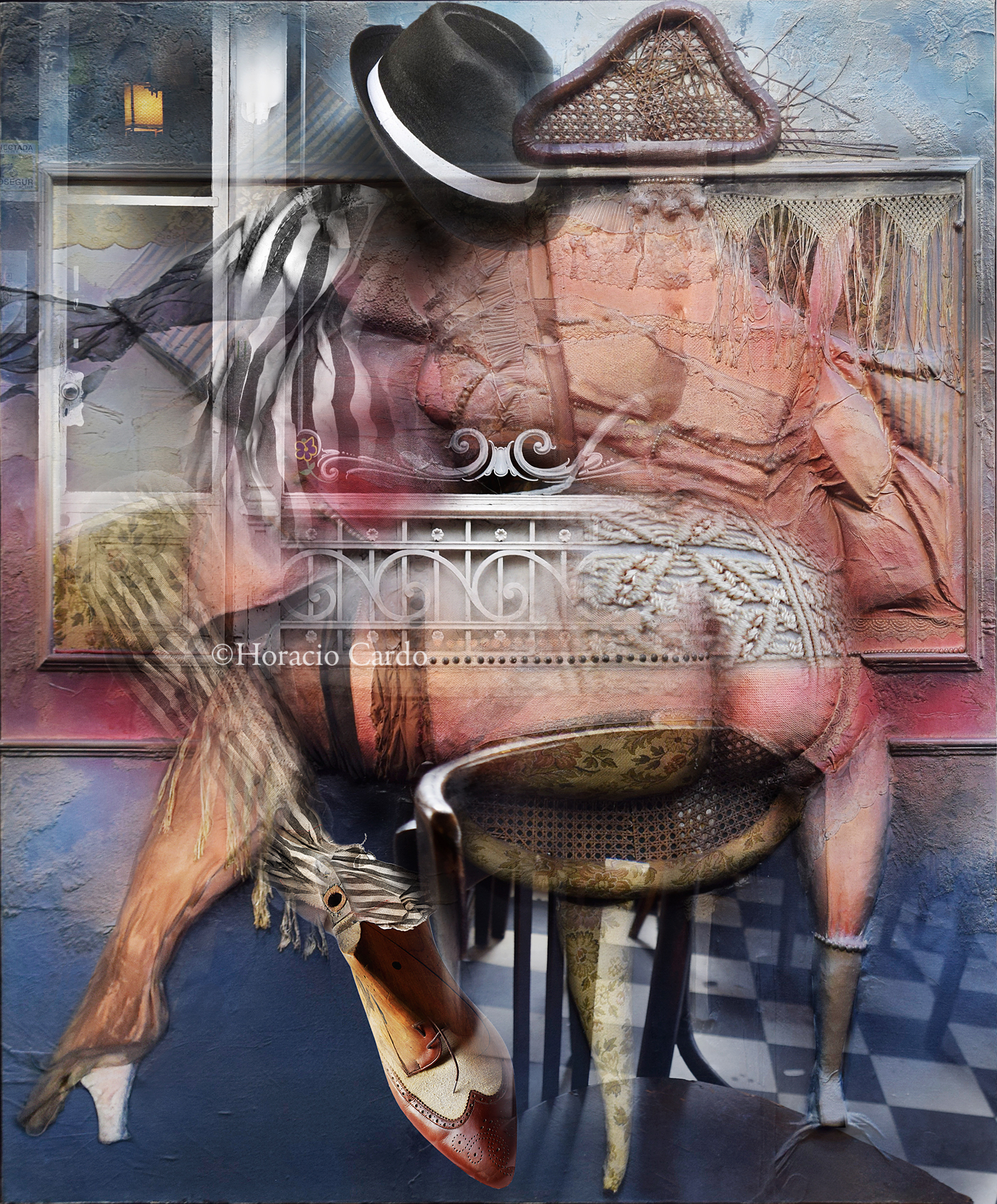
Suburb tango (tango de arrabal)
Efforts have been made to rescue the tango from its marginal origins, when —as a derivation from the milonga— it started to be danced between men in brothels or whorehouses, called euphemistically, “houses of tolerance” because they were indispensable, principally because the mass migration that arrived in Buenos Aires was mainly male. This was a grotesque entertainment in those antechambers of sex, as a demonstration of rebellion and courage, that often led to knife duels, boasting, represented fully in the dance by glory of the arabesques. A sordid confluence of eros and thanatos. That is why the tango, the hymn of the suburbs, bears that warm breath of sin, resonances of a forbidden world, extramural, and leaves floating over the body of the woman, according to Ezequiel Martínez Estrada, “a breath of sorrow, something sticky and viscuous, as the echo of its movements and its deliverance in a trivial dream; because the woman has not been possessed by an incubus, but by her own cellibacy”.
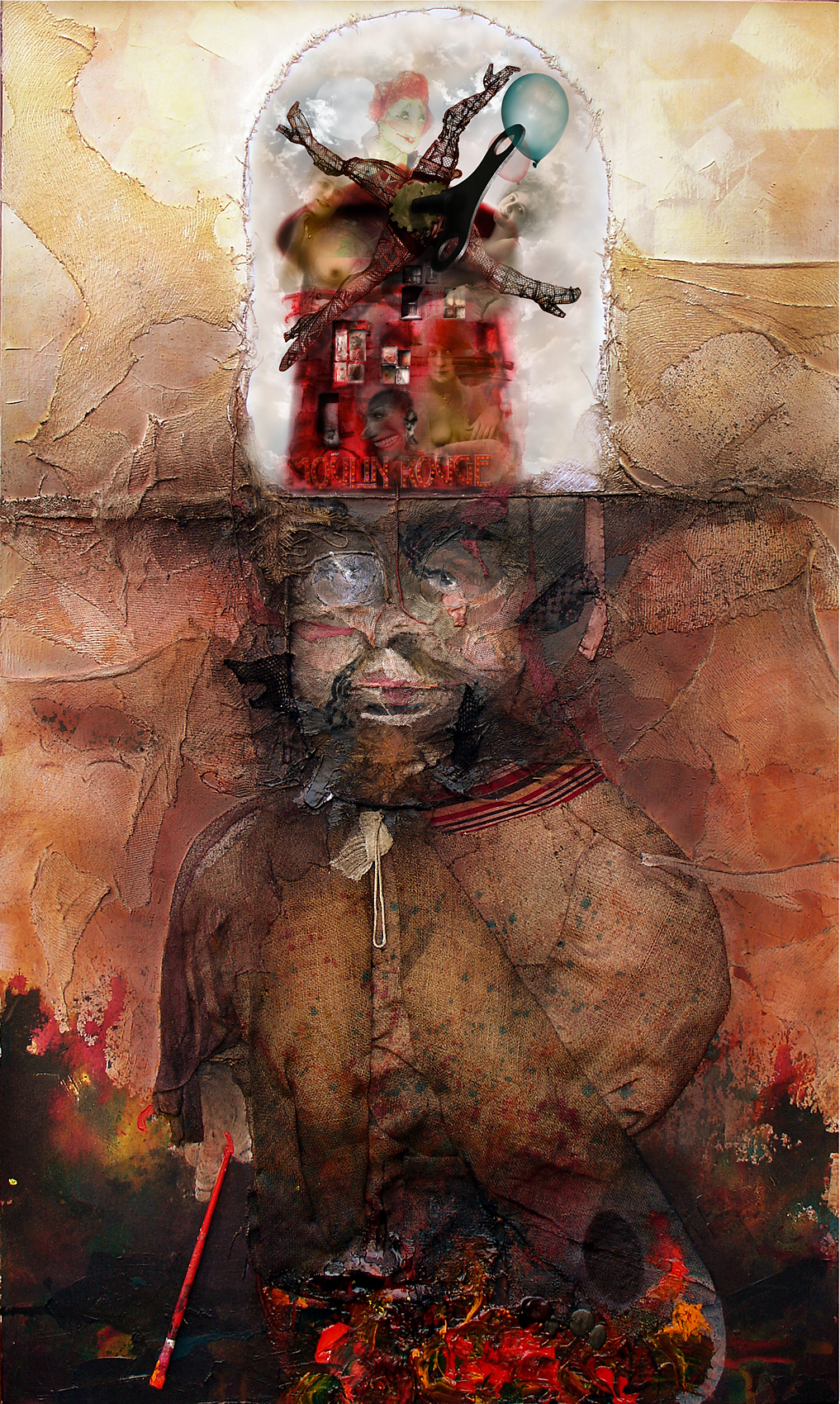
Lautrec's galley
I always believed that the blades of the Moulin Rouge must have been like those shown in the picture because they represent the circular dance characteristic of the place, the Can-Can, baptized as French Can-Can, paradoxically, by an Englishman, Charles Morton, and because the attraction of the place were the legs of the chorus girls when they lifted their skirts all at the same time. It is a cabaret situated in the red light district of Pigalle, in the Clichy boulevard, near Montrmartre, in Paris. It was constructed in 1889 by the Spaniard Josep Oller, who was also owner of the Olimpia. The wealthy Argentine class, who enjoyed the Parisian night, tried in some way to transport it to Buenos Aires.
Collage of different fabrics, acrylic paint and digital plotting.
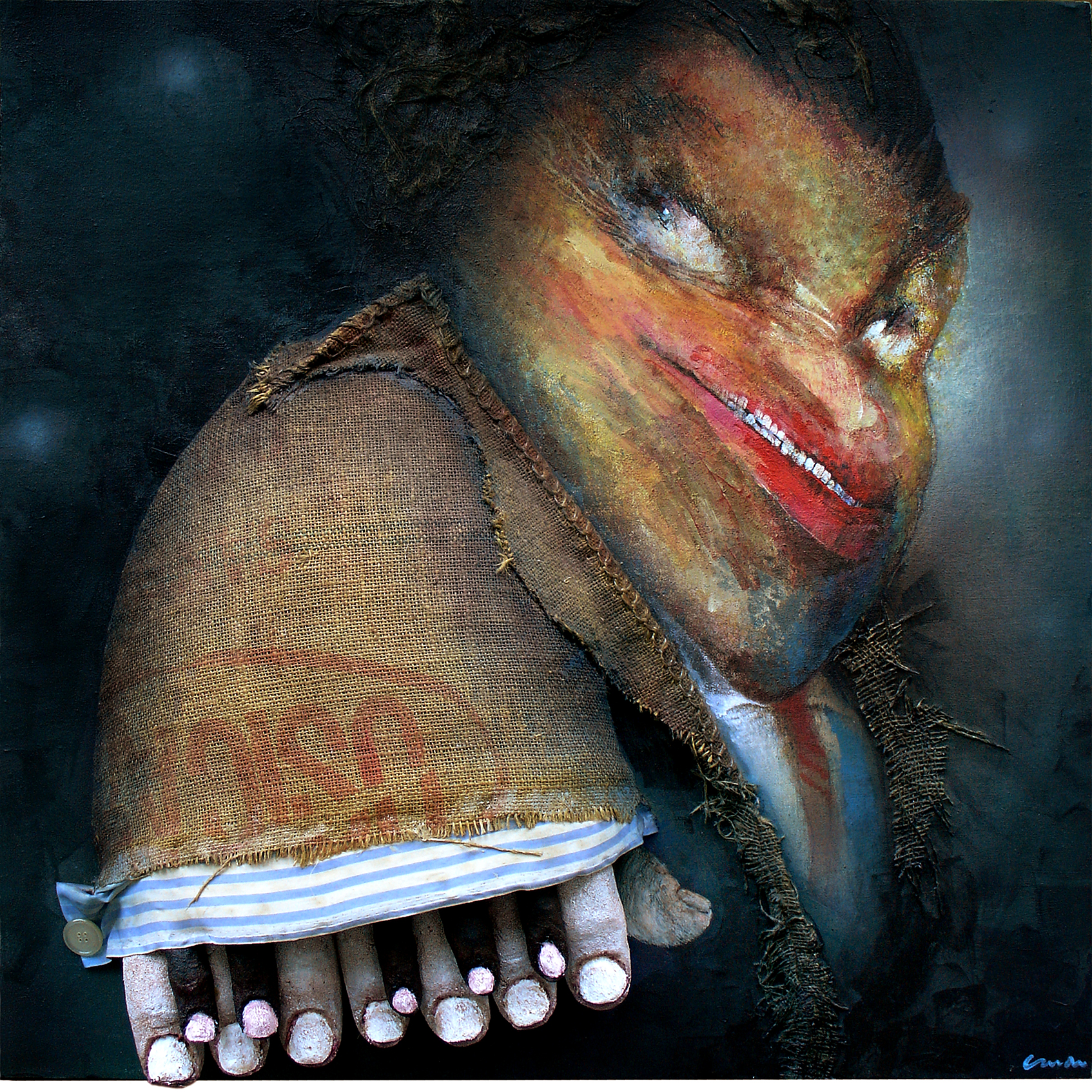
Jazz
First brother of Jazz, born of a similar cultural fusion —black and white races, represented by analog piano keys— both represented the quintessence of the migratory movement. In fact, both rhythms coexisted in the dancing rooms of the old Buenos Aires, where they played so much the typical tango orchestras as the sets of jazz and fox-trots.
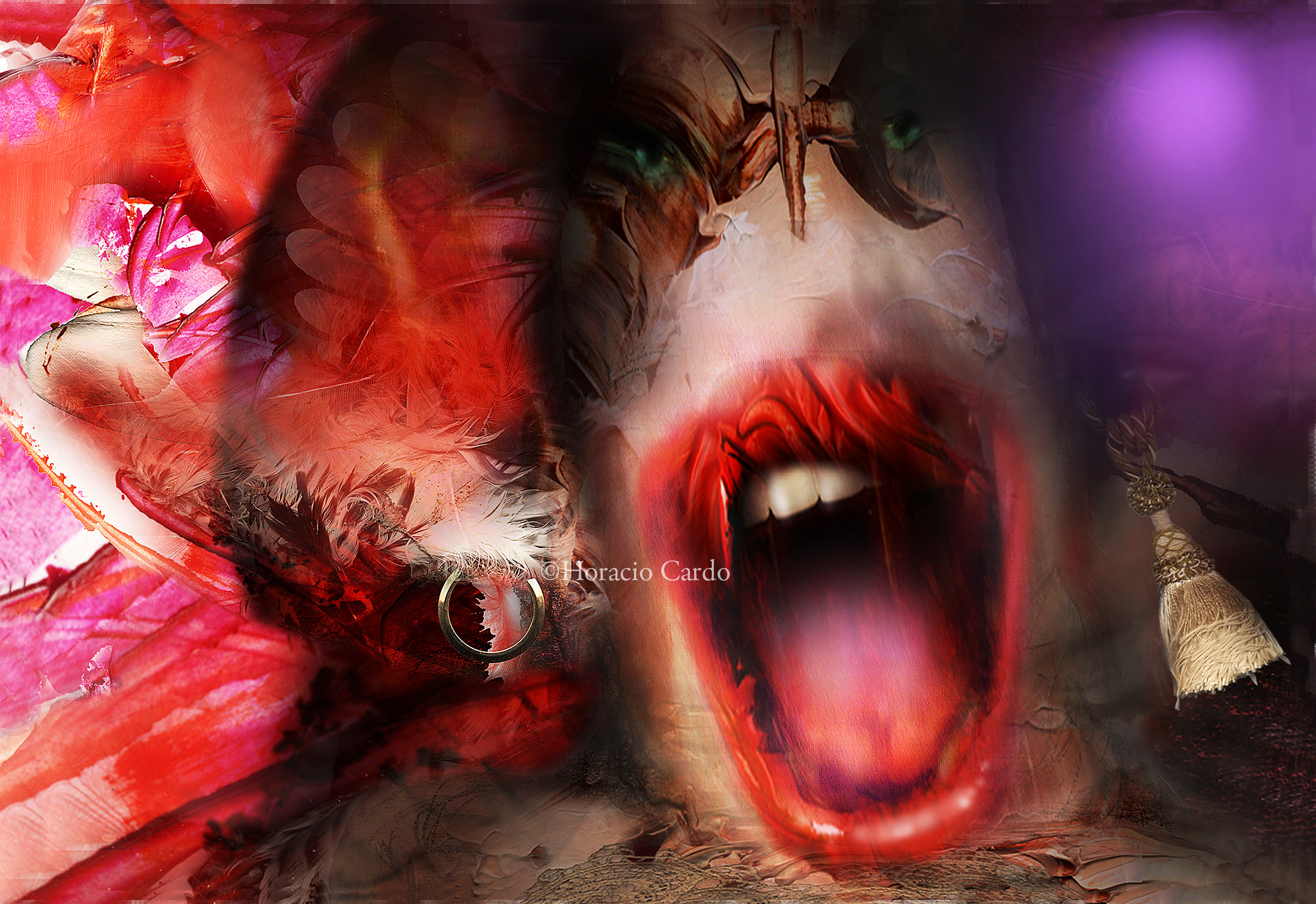
Dadou Le Brun
Towards the end of the 19th century the strip-tease started to be practised in Paris: a woman would search for an unexistant flea in her clothes while she took these off with studied parsimony, (another variation, practised by Germaine Aymos, consisted in appearing in the scenario dressed only with three shells to cover her charms). The Moulin Rouge and the Follies Bergere were the stars of the Parisian nights.
World celebrities acted there, such as Jane Avril, Charles Aznavour, Josephine Baker, Bing Crosby, Yvette Guilbert, La Goulue, Dean Martin, Liza Minelli, Mistinguett, Yves Montand, Edith Piaf, Ginger Rogers, Frank Sinatra and Peter Ustinov, but, doubtless, the most important figure that was associated with the cabaret, was Henri Marie Raymond de Toulouse-Lautrec-Montfa, the “Quasimodo of art”, as he was called, a disabled aristocrat that would become famous as a painter, and for entire seasons lived with the prostitutes, painting them. Possibly, by his inability to move his legs, Lautrcec was able to capture their movement in his paintings.

Tessa Le Brun
The wealthy Argentine class of those days fluctuated between Paris and Buenos Aires and tried to duplicate the Parisian night on the shores of the Río de la Plata (silver river). Between 1857 and 1924, the immigration mass was made almost entirely by men. To alleviate their loneliness, in 1875 the opening of brothels had been legalized —euphemistically “houses of tolerance”— where tango was danced. There were any amount of these in the lower quarter, although one of the most famous operated in Corrientes 509, with three courtyards and eleven rooms, frequented by the bourgeouis, where German, Polish, French and Austrian women worked. Another famous establishment was “Lo de Madame Blanche” (La Dame Blanche or The White Lady), a name probably inspired by the comic opera by the composer Francois-Adrien Boieldieu, as an extension of the literary magazine La Revue Blanche, founded by the Natanson brothers, where the most important French artists of that era contributed. The truth is that after several changes of venue “Lo de Madame Blanche” finally moved to the heart of the city, in Montevideo 775, and that those French prostitutes, forerunners of the Belle de Jour, owned by Joseph Kessel, and popularized by Luis Buñuel, would return to their native France to continue their lives as chaste wives. It is said that the pianist Enrique Saborido played there for the first time his famous tango “Felicia”, dedicated to the dancer Felicia Ilarregui, towards 1907.
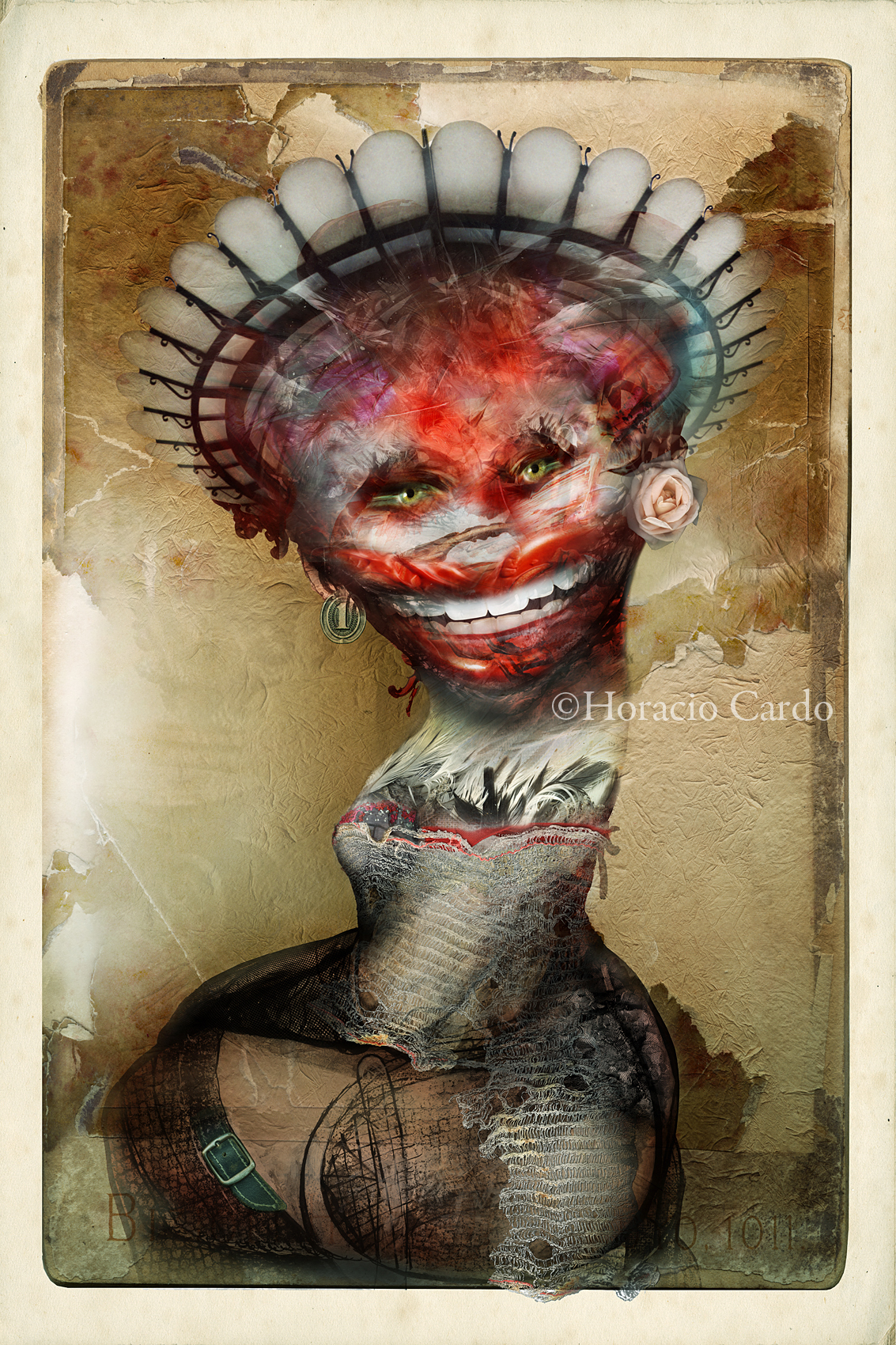
Brothel' angel
Another of those cabarets, and perhaps the most luxurious one, was the Armmenonville, that functioned between 1910 and 1920, and the famous Café de Hansen (Lo de Hansen), situated in Avenida de las Palmeras (now Avenida Sarmiento), in Palermo, perpetuated in the verses: “Te acordas, hermano, la Rubia Mireya que quité en lo de Hansen al guapo Rivera?” (“Do you remember, brother, blond Mireya, whom I snatched at Hansen’s from the bouncer Rivera?”), and in Manuel Romero’s picture “Los muchachos de antes no usaban gomina”. (Yesterdays’ youths did not use brillantin).
These bordellos were the place where most of these true goddesses of erotism shone, such as Sarita, a certain “Juana, la Cívica”, and the legendary sisters Le Brun, Dadoo and Tessa, whose likeness decries the suspicion about their false parentage, about whom nothing was ever known after, and just the memory remains. Stereotiphied, pimps, with an abundance of flesh, bijouterie and fetichism. It is noteworthy that in those days cocaine and other products derived from the coca leaf were sold freely as a local anesthetic and were consumed in those places.
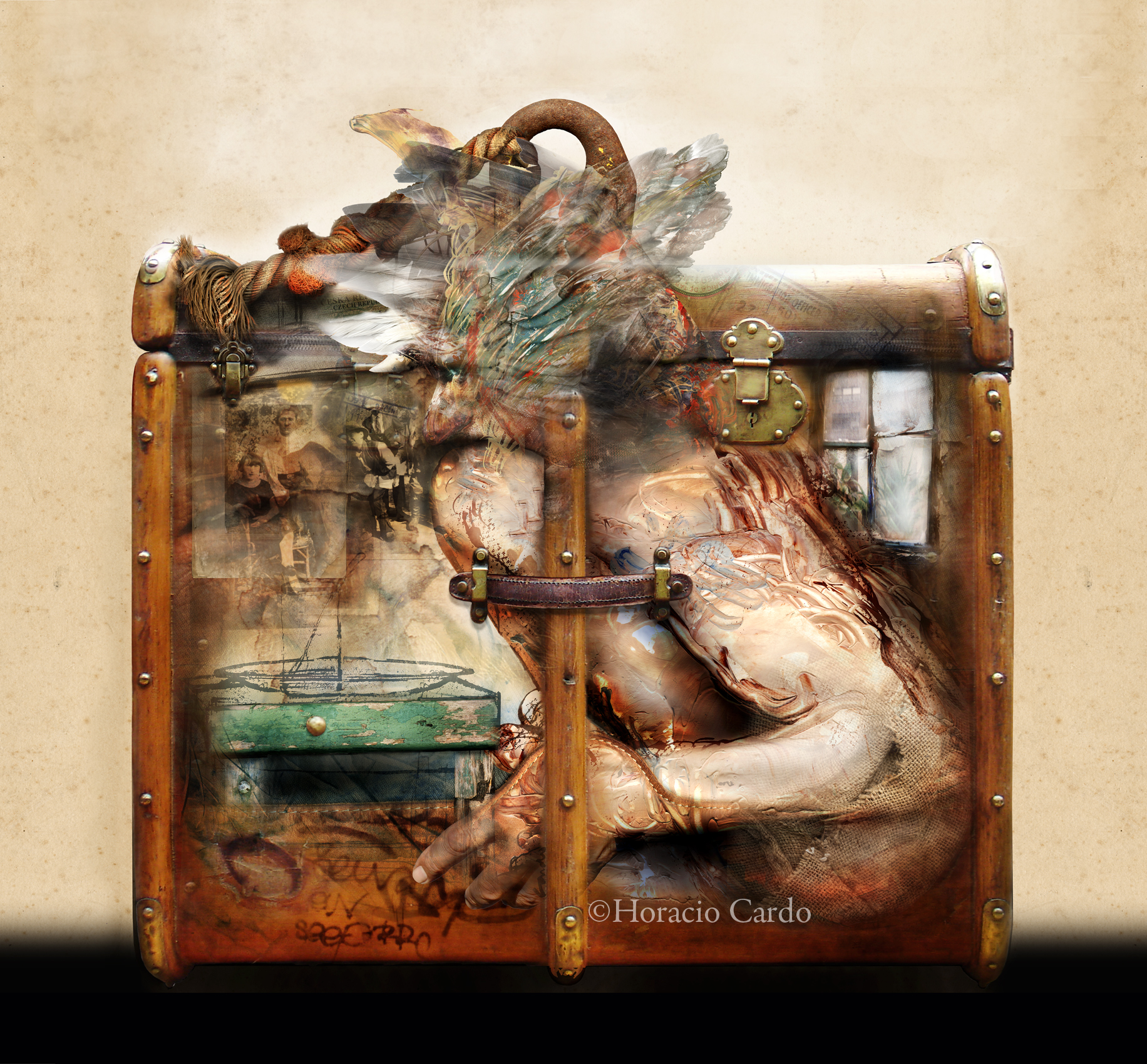
Room of an Immigrant
Our ancestors, at sometime in their lives, bore their hopes and belongings beyond the horizon seeking a salary based society where the pay was not an end in itself, but a means of achieving their own worth and the recognition of others. Pregnant for months in the bowels of ships, those immigrants were birthed on unknown land. There they had to adapt to a new language, new customs and jobs and activities which they never imagined they would find themselves doing. They will take refuge in transitional rooms which will never modify due to their longed return to homeland, which will however never take place, anchored as they already were to their foreign children. They wrap themselves in their rooms, halfway between hope and reality.

"Conventillo": poor multi-family dwelling of Buenos Aires
It was the first transitional home of most immigrants arriving on the shores of Buenos Aires. In general, it consisted of a central courtyard and one hundred and twelve rooms with a kitchen added to each one on its front. The sanitary conditions were quite precarious. They mixed people of all languages and nationalities, mainly Italians, Spaniards, French, Jews and Arabs, and gave rise to works of tango as “El conventillo de la Paloma”, by Alberto Vaccarezza, based on the construction that still survives in the neighborhood of Villa Crespo.
At some point a woman arrived, “La Paloma”, a manufacturer or prostitute, according to the different versions, which originated the name of the place and the character of the sainete mentioned, premiered in 1929.
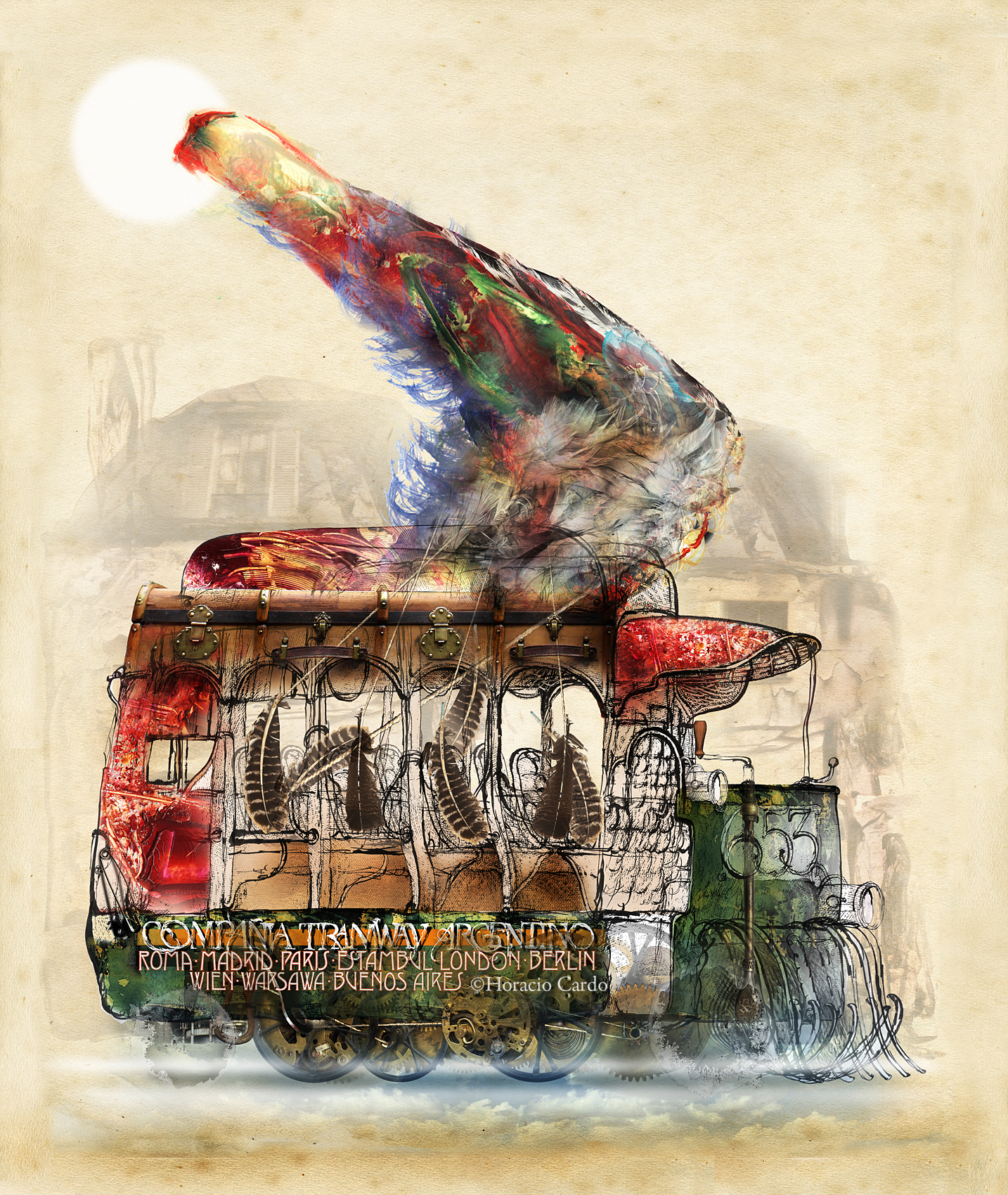
Buenos Aires Tramway
In 1897 Buenos Aires, like all the great capitals in the world, adopted the tramway as its public transport. The sight of these trams boosted the immigrants’ illusions and hopes to have reached a better world (see image). Its extraordinary benefits: it uses less electric energy than the subway, it occupies a narrower lane in the street than that used by omnibuses, it is easier to get into, its motion is gentler and more comfortable than omnibuses and trolleybuses, and its capacity is greater than in the omnibus, its equivalent.
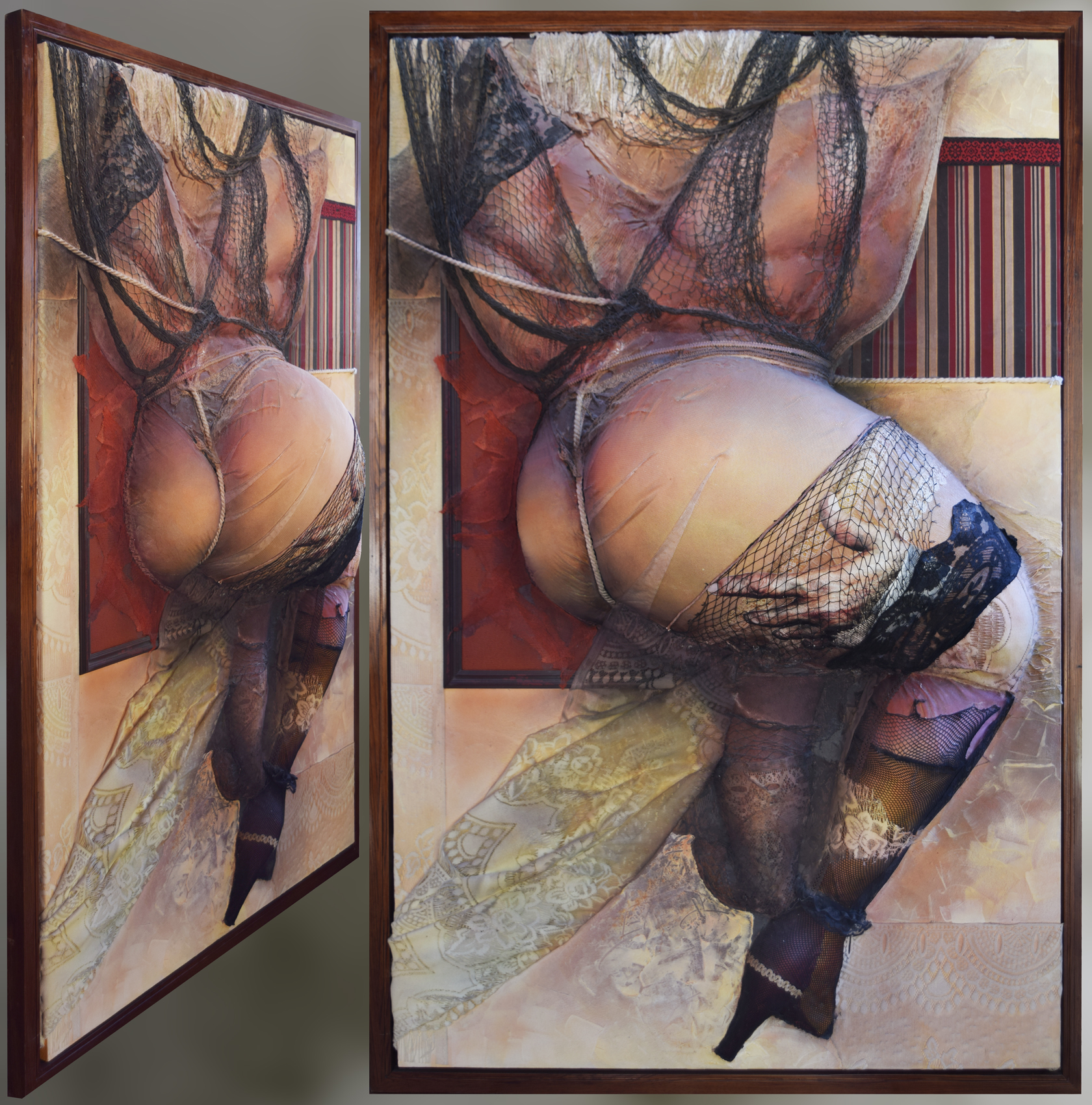
Tango
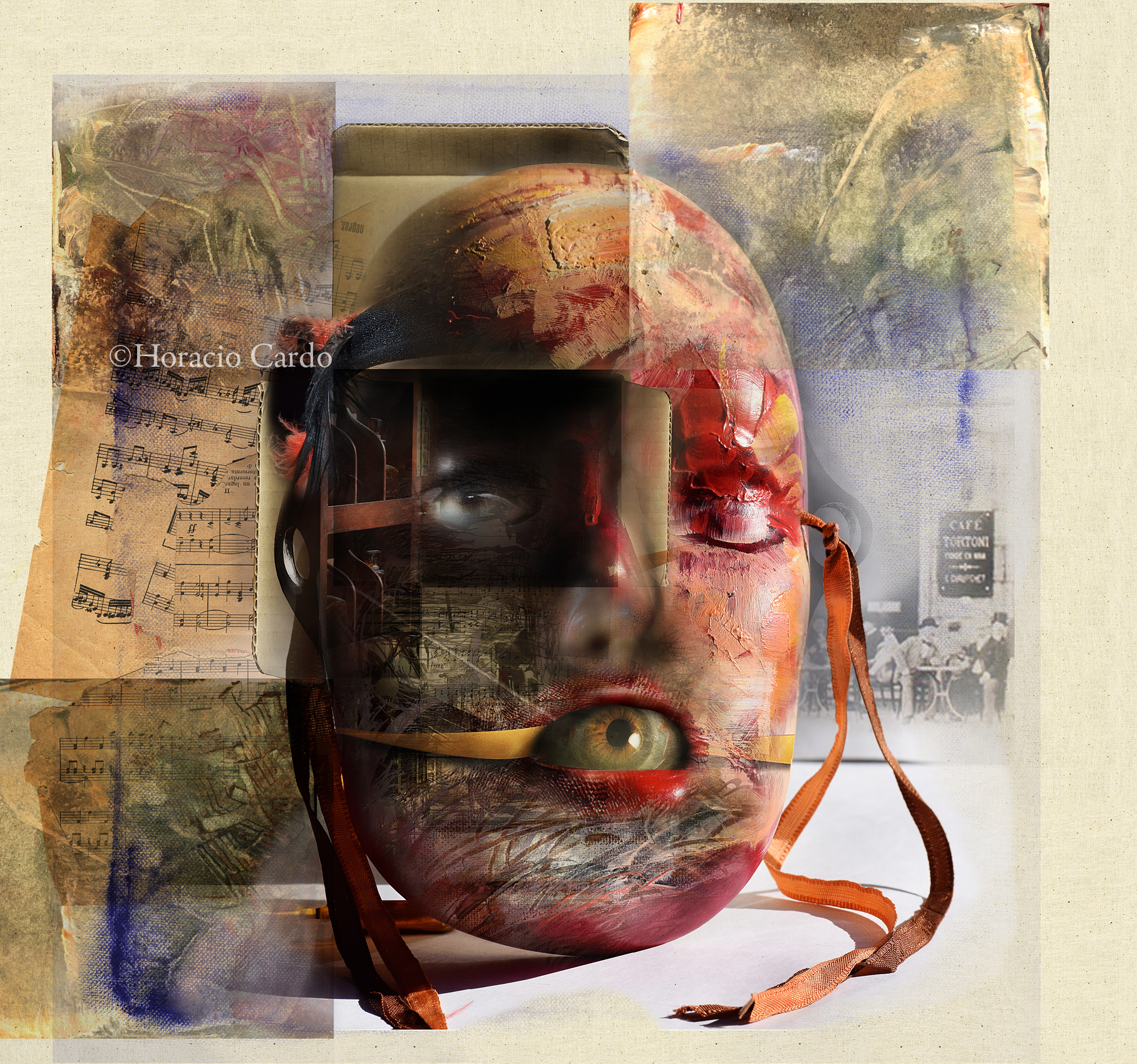
Ada Falcón
Another celebrity that the public assign an archetypal property. was Ada Falcón (Aída Elsa Ada Falcone), who was a hugely successful female singer, especially between 1925 and 1938, and the inspirer of the waltz "I do not know what your eyes have done to me" by Francisco Canaro.
It was around 1938 that her apparitions and disappearances began. She refuses to sing in public, then before his own musicians (she order to place a curtain between her musicians and her), until in 1942, he resigned in full success to artistic applause, "she sold everything owned, her beautiful villa in the province of Cordoba and her fine jewels of Cartier, to help the poor "(According to Discépolo told by Cadícamo). She keeps immersed in a total mystery, that the disproportion of its public and journalism explained by saying that she had become a nun. However, torn between the profane and the sacred, Ada Falcón, mysterious in her own way as Greta Garbo, was imprisoned in that locality with a prophecy name (“Salsipuedes”: get out if you can) a town in the mountainous area of Cordoba.
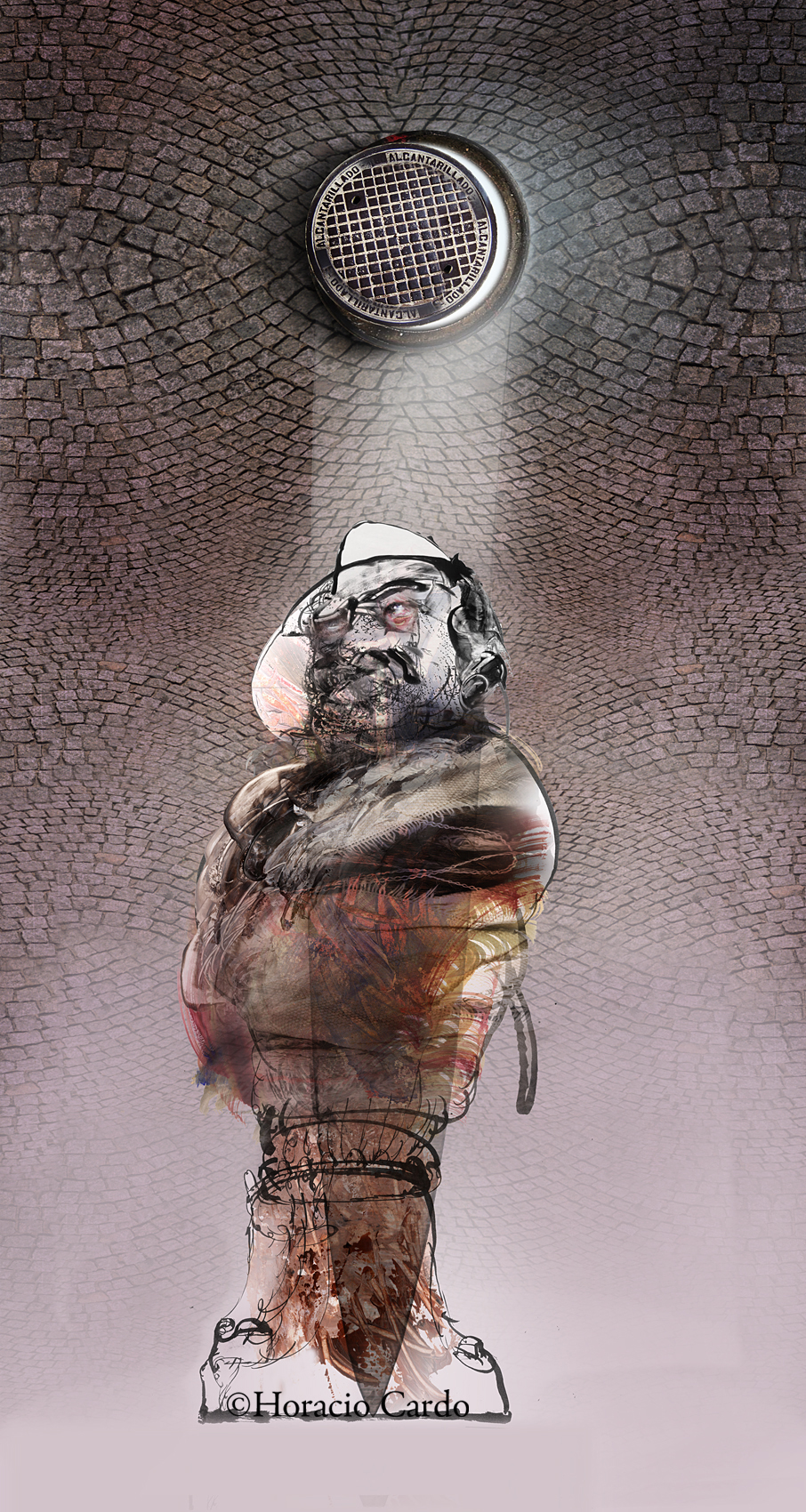
“El compadrito” (suburbian roughneck)
Who knows what is the reason
That name is searching for me.
I would like to know
The sort of man he has been.
Milonga of Jacinto Chiclana
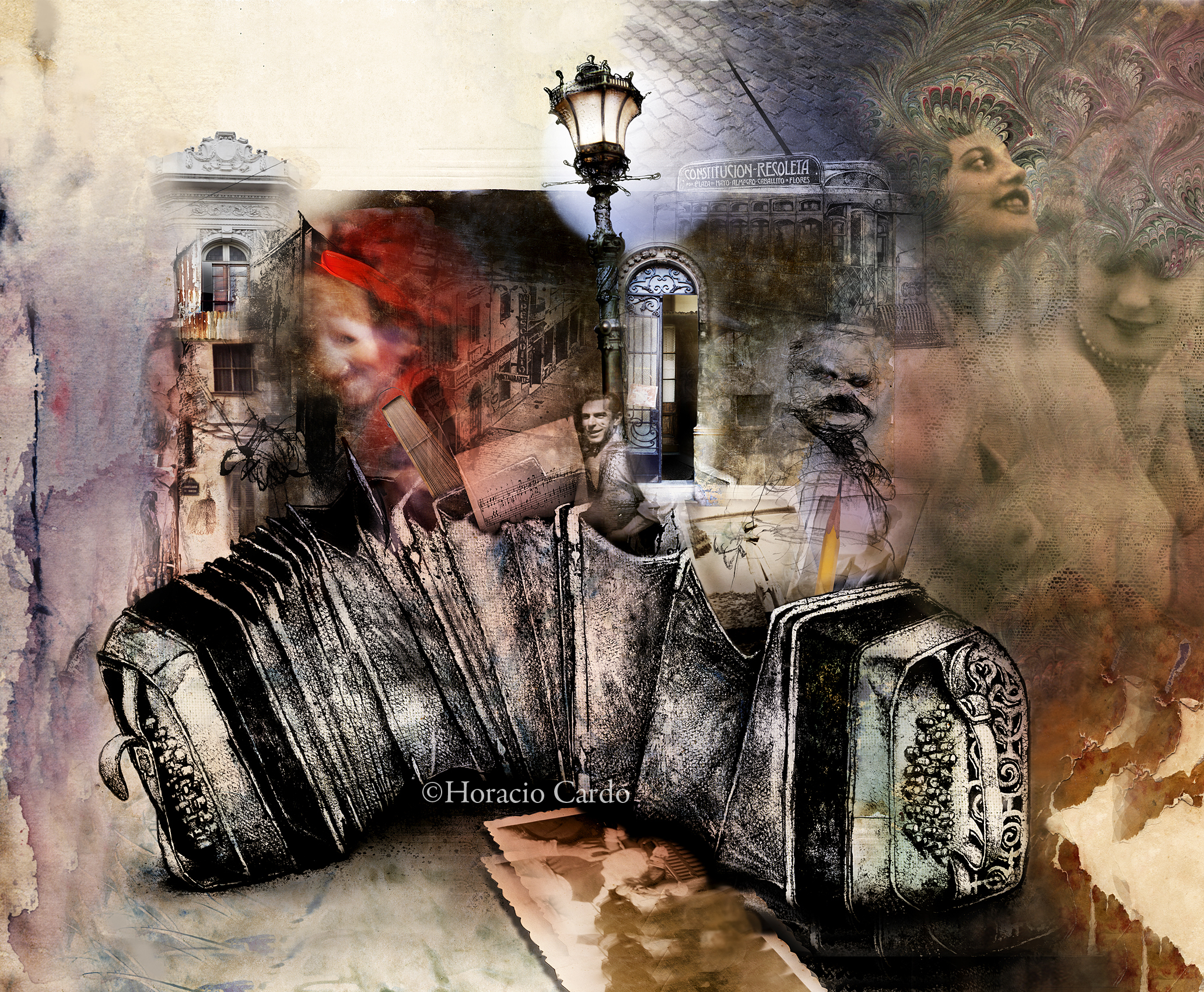
Memories of a bandoneon
This instrument of German origin is incorporated into tango at the end of the 19th century, and immediately becomes the most representative of the music of the Río de la Plata. His interpreters keep true dialogues with it. Such, the case of Homero Manzi’s poem, “Ché, bandoneon”, from which we publish a fragment:
Bandoneon,
Today is fandango night
and I can confess you the truth
glass to glass, penalty to pain, tango to tango,
packed in madness
of alcohol and bitterness.
Bandoneon,
Why name her so much ...?

Coffee fairies gathering
Much has been said about the vague figures who wander through the stains of humidity in the porteño cafes, and lie at their tables, real books for those who can read them. This apparent dimensional coexistence with the current parishioners, whose experience was initiated by the Belgian Jules De Haes at the Café de Marcó —closed in 1871, a century before his arrival in the country—, was recorded by the retroboscopic pencil of the visual chronicler.

The sorista of Balcarce street
Buenos Aires has produced some inexplicable transpositions of time indicated by some authors, of which El Aleph by Borges is only one of them. This meeting with that sorista occurred in an old house in Balcarce at 1100, in the neighborhood of San Telmo. An inexplicable fact that lasts in the flesh despite the passage of time.
I went back several times to the place, but it was impossible to find that house.
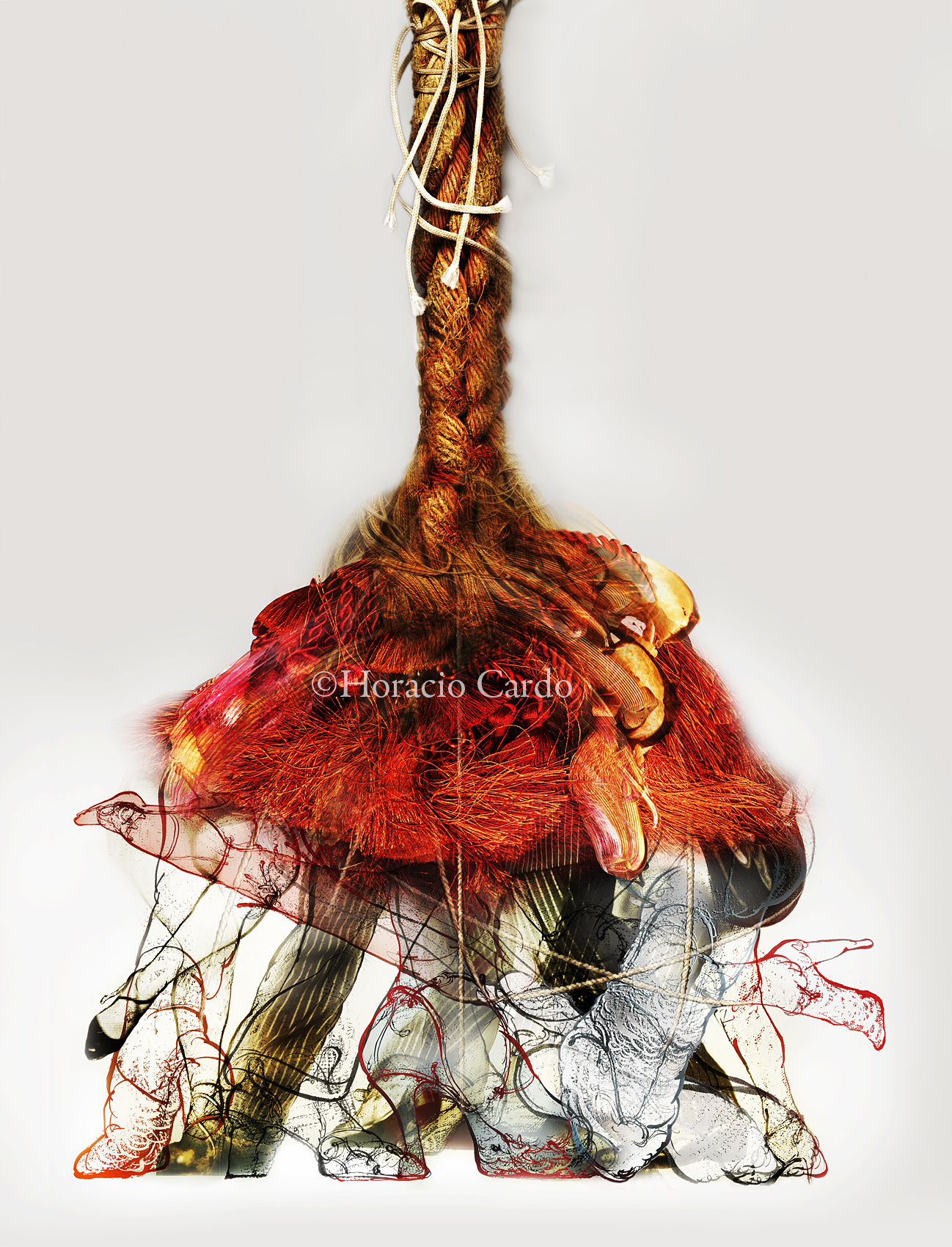
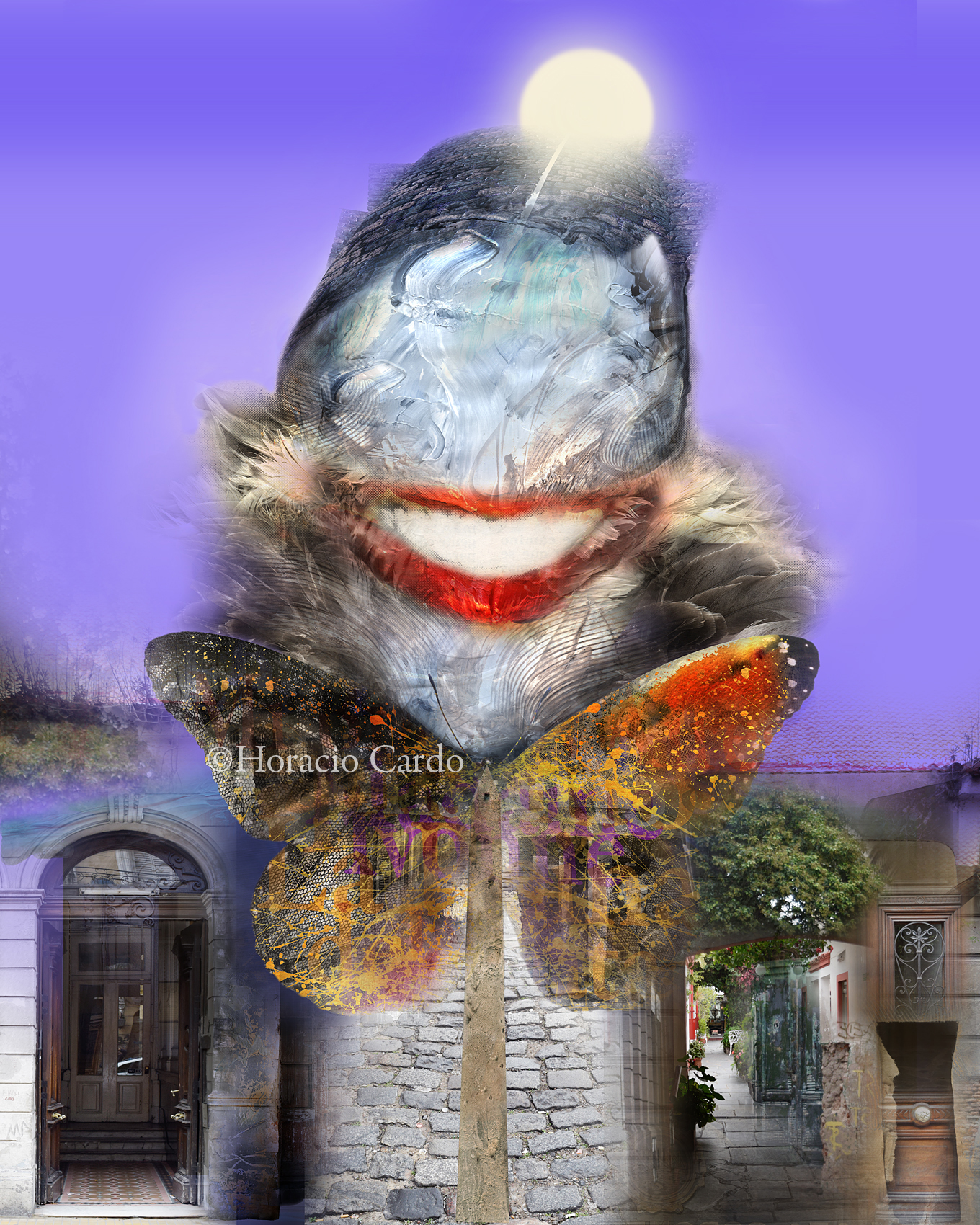
Buenos Aires mith (mito porteño)
"Angels die burned" (Cadícamo referring to the death of Gardel).
The desperate search for models that exceed their miserable condition, has made man deposited in some people icons in which he wants to be reflected, prodigious qualities that exceed notoriously the vulgarity of the individual itself, and converts them into extraordinary, mythological beings (from Greek μῦθος, mythos, "story"), even supernatural. The oral tradition places them in an unattainable place, and they become part of the cosmovision of a nation.
Carlos Gardel met the ideal conditions to embody this fundamental narrative, exacerbated in him by the anguish of an uncertain origin and suspected of unseemly, that overflies the hybridization of the Argentine himself. Gardel was disputed for years between Argentina, France and Uruguay, until the discovery of the registration of his birth in the civil registry of Toulouse, France, with the name of Charles Romuald Gardes, on December 11, 1980, put an end to the citizen resistance, and ended with his tragic death, on June 24, 1935, in Medellin, Colombia ("who knows one night I face death and, dear Buenos Aires, I do not see you again!" Cadícamo).

“It’s the dance from the hip to the feet.” (diptych)
According to Ezequiel Martínez Estrada, and adds: “from the waist to the head, the body does not dance; it is rigid, as if the legs, awake, carry two bodies asleep in a hug. ”
There is a certain correspondence with the jovial Irish dances, although only in that separation of the trunk with the legs, because in the music of the suburb “each note falls heavy and as with spite” (Ricardo Güiraldes). “The movement of the legs and hips, some heels, sideways runs, cuts, breaks, half moons, and that trick with which the thigh of the woman, subtly deceived, hit in all its length with the man, firm, rigid”.
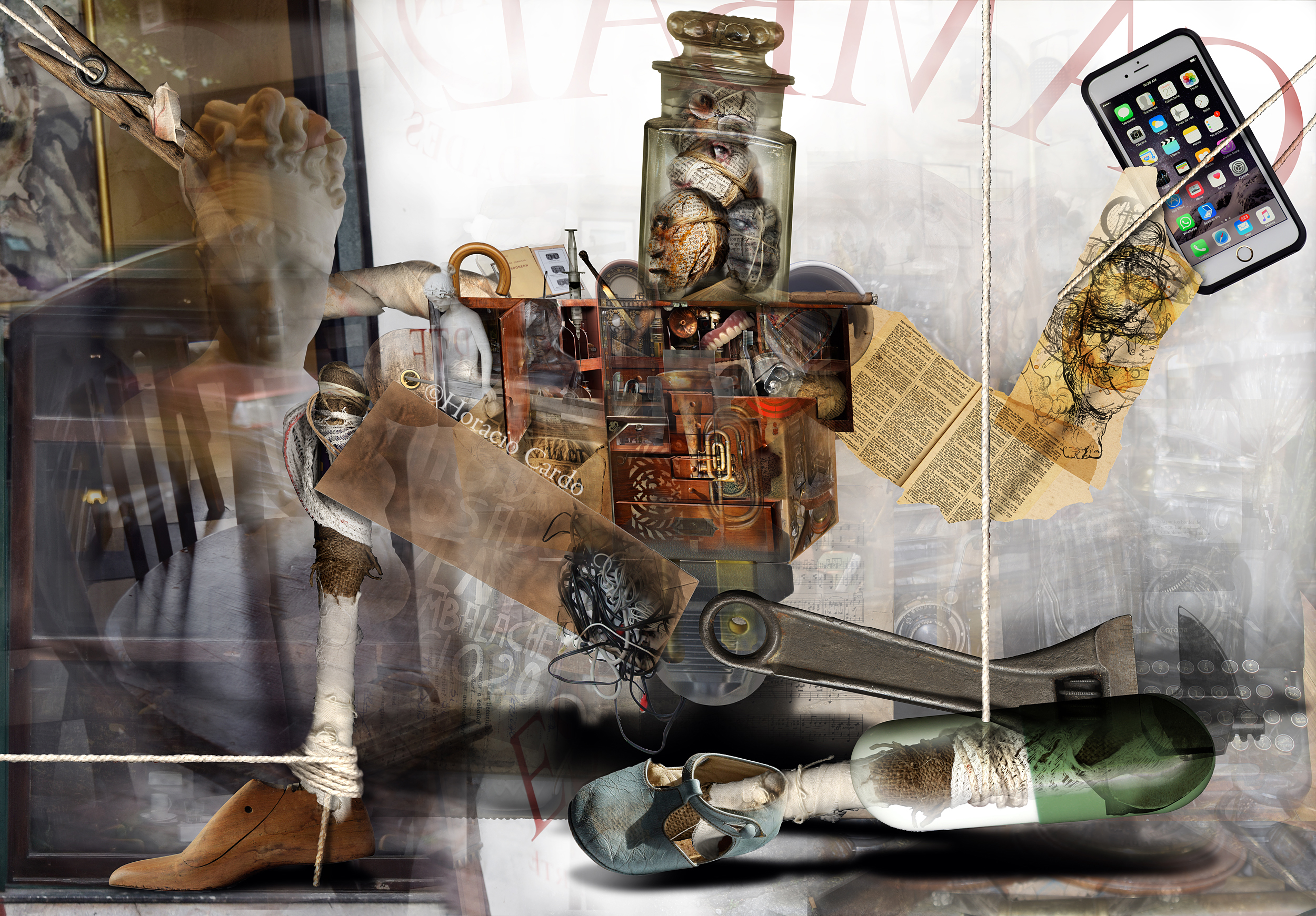
Cambalache* (Man dismembered between things)
Cambalache (voice from lunfardo (Argentine slang) with what is called a business of buying and selling used things), the intellectual content of this tango became a universal theme over time, applicable to any society in the world.
Composed in 1934, it is an x-ray of the 20th century and perhaps the masterpiece of that great poet who was Enrique Santos Discépolo, whose sharp, critical and ironic mind conceived as the disrespectful showcase of the century.
Swap shop*
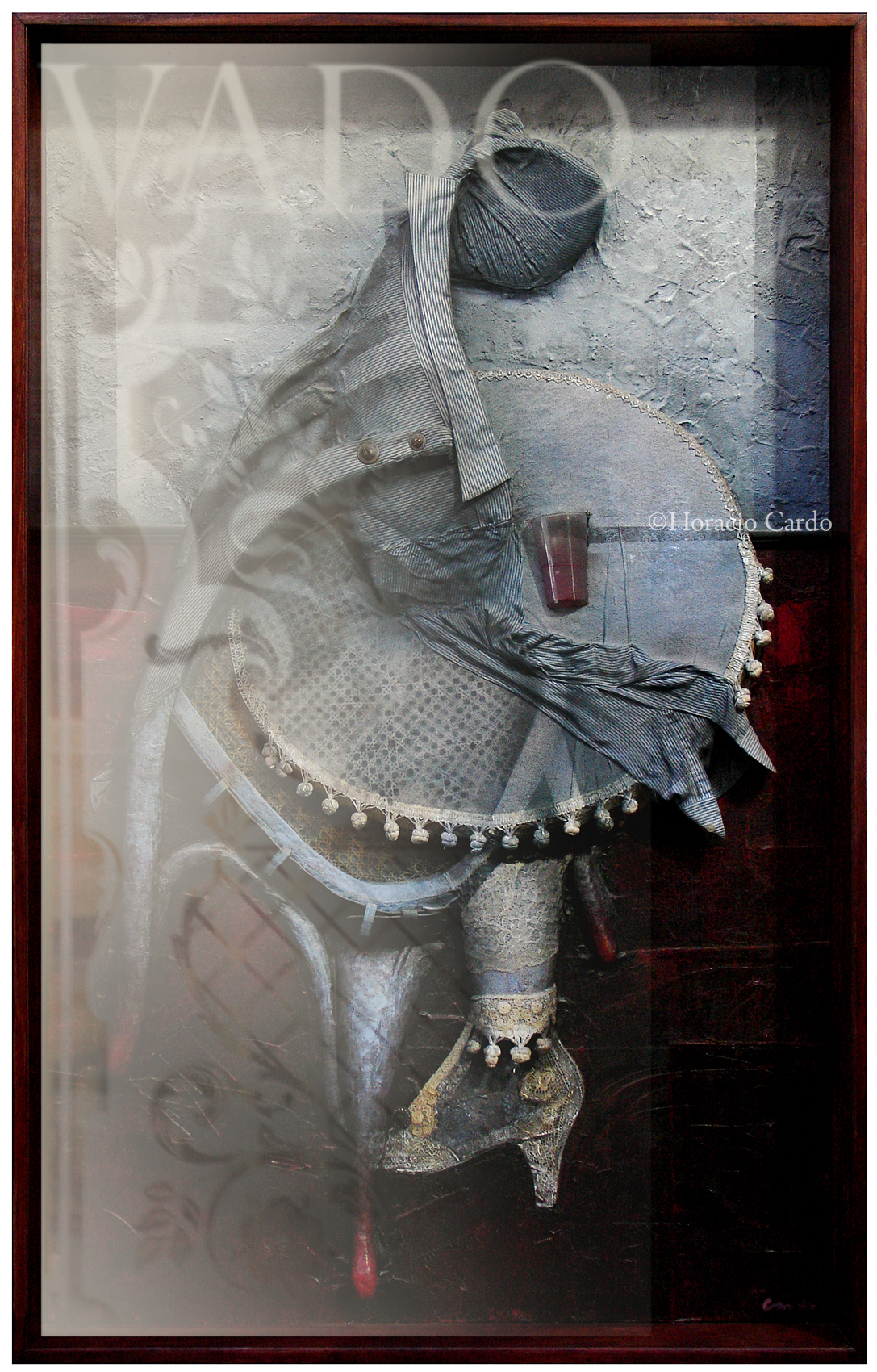
Amor de cafetín* (Coffee shop love)
Coffee is the perfect place for love to nest. Date of many lovers, prelude to their passionate encounter, they were always witnesses of many intimate, secret dramas.
Time crumbles everything, and inevitably the moment will come when one of the lovers will not attend the meeting (in this case, the woman). The other will continue going to that table as one looks to an amulet. The renowned psychic Boubin de Tallard referred to the ability of objects to absorb energy, store it and retain it for extended periods of time, transforming them into amulets
Exposed in 1988, this work was declared a loving talisman.
*Cafetín: bar where the porteño goes to drink coffee, but only occasionally take his girlfriend.
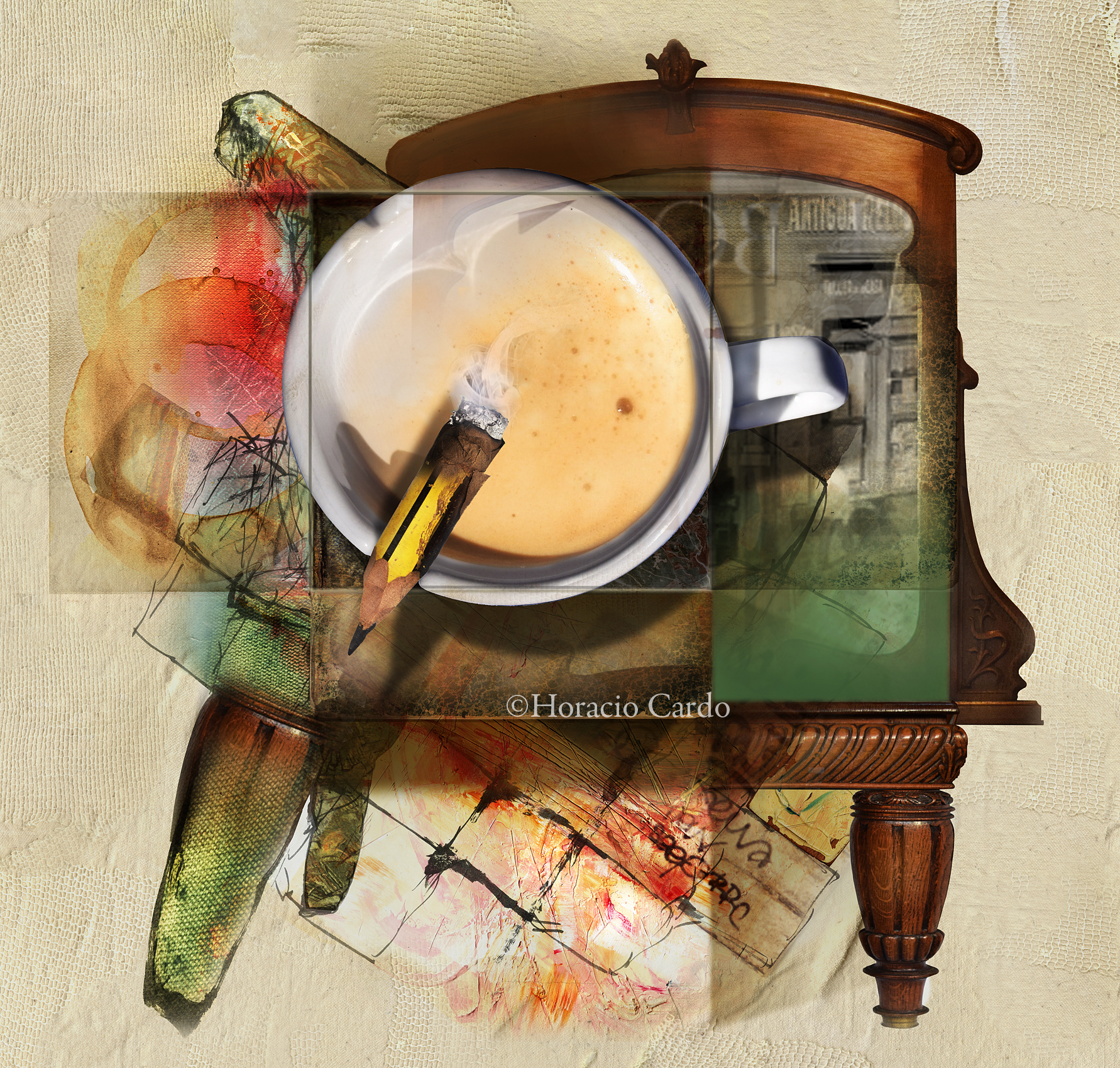
Coffee philosophy
The Caffe is the second maternal womb of the porteño ("you are the only thing in life, which resembled my old mother." Cafetín de Buenos Aires, by Enrique Santos Discépolo). It is a prolonged room of his house, the temple of a pagan religion with parishes in some corners of Buenos Aires. It is the neighborhood, the childhood, it is a meeting of the bar, billiards, the place to start a romance, the place required for the exchange of ethical, aesthetic and metaphysical concepts ("a school of all things ..."), and the inspiration that gave rise to myths and literary pieces. So much so, that the porteño invites coffee before that to his home. Complex universe for the small price of a coffee, drink that according to some owners of these establishments, "sharpens discernment and lucidity, characteristic of reflection and philosophical dialogue" ("we lived a very, very naive time, for example, people buy products whose excellence is announced by the same people who sell them. "Borges)
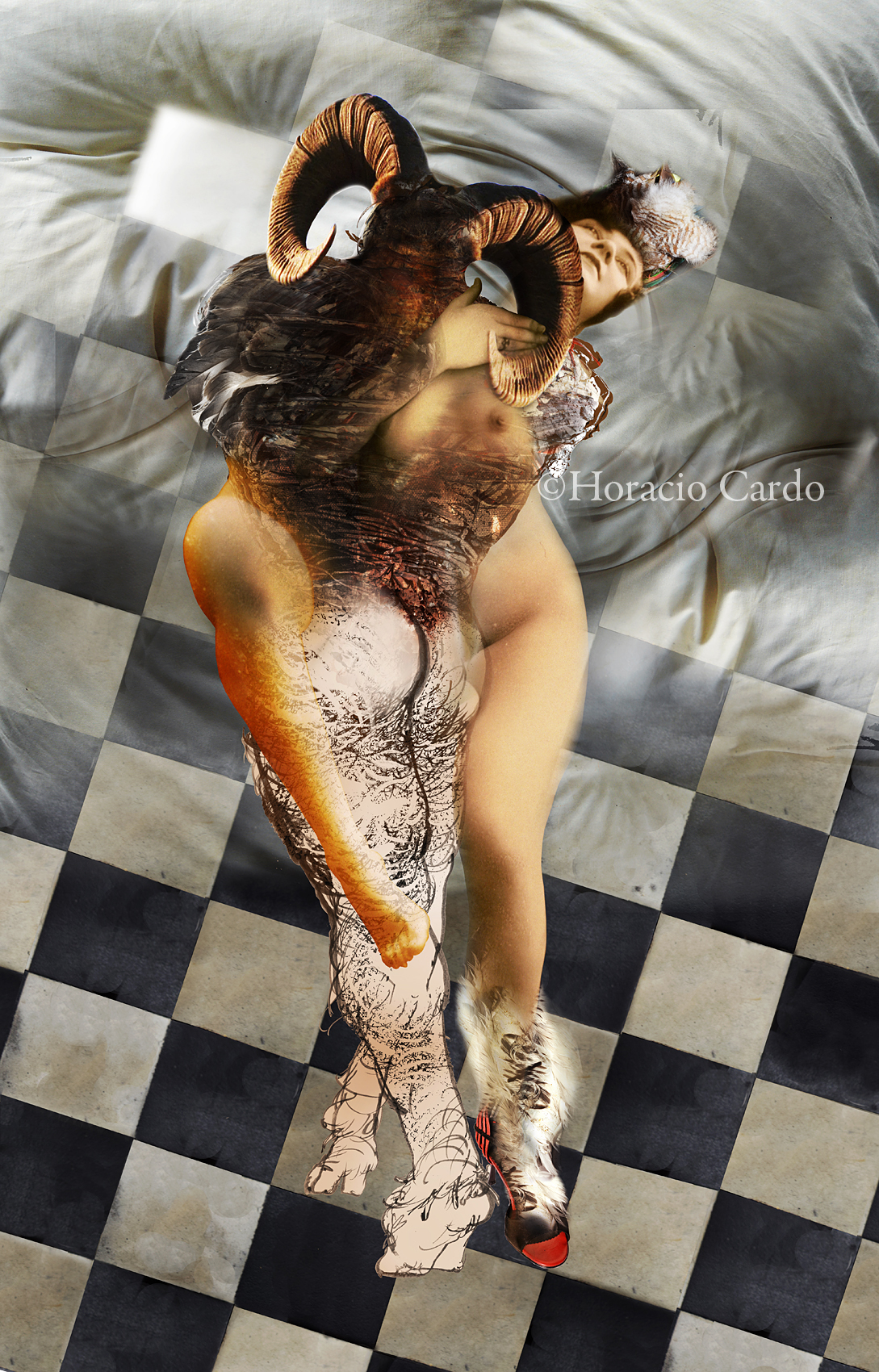
The Minotango legend
The minotaur was the son of Pasiphae, wife of King Minos of Crete and of a white bull from which the woman had fallen in love. Inexplicable as many of the traditions that we carry in our blood, this myth embodied in the Argentine woman, who goes to these night places, where the currency of payment is the good dance. The women leave the premises in groups, with the excuse of accompanying themselves to return to their homes, when in reality they will meet the goat of the day known in the milonga, whose meeting was scheduled in the corridors or on the way to the bathroom and has decided which of the two will come first. This simulation does not happen with foreigners, due to the imminence of their departure.
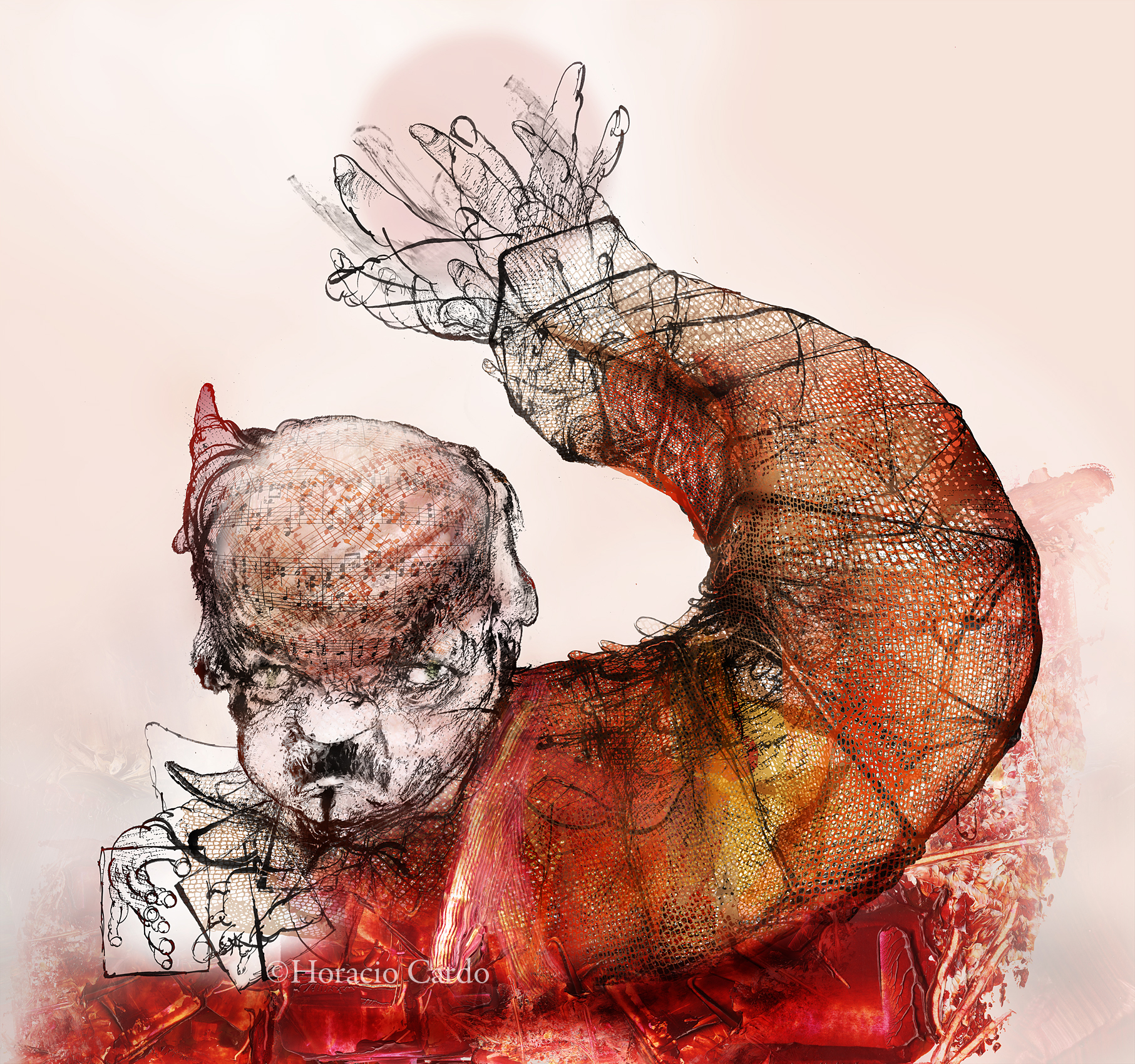
Dragon of Buenos Aires
"You play very well the bandoneón, kid ... but you do not know anything about tango". This famous truism of Gardel, who as a musician, did not happen to be more than a guitar scraper, may have been the first disqualification perpetrated by a former tango to the extraordinary Argentine composer Astor Piazzolla. By that time, he was already trying to prove the basics of his vision and exhibited the pretense of having taken over the tango. A tempting idea, given the pedestal on which he had wanted to position Hollywood, in his failed attempt to replace the idol Rodolfo Valentino. His disappearance in full success ended up turning it into the porteño myth par excellence. Scholarship by the government of France, Piazzolla studies with Nadia Boulanger, who according to the musician himself discovered his line to follow. From there he would form the Buenos Aires Octet, the string orchestra, the Quintet, the New Octet and the Nonet. The conspiracy started by Gardel would be devastated by the evidence: Piazzolla had come to resize the tango.
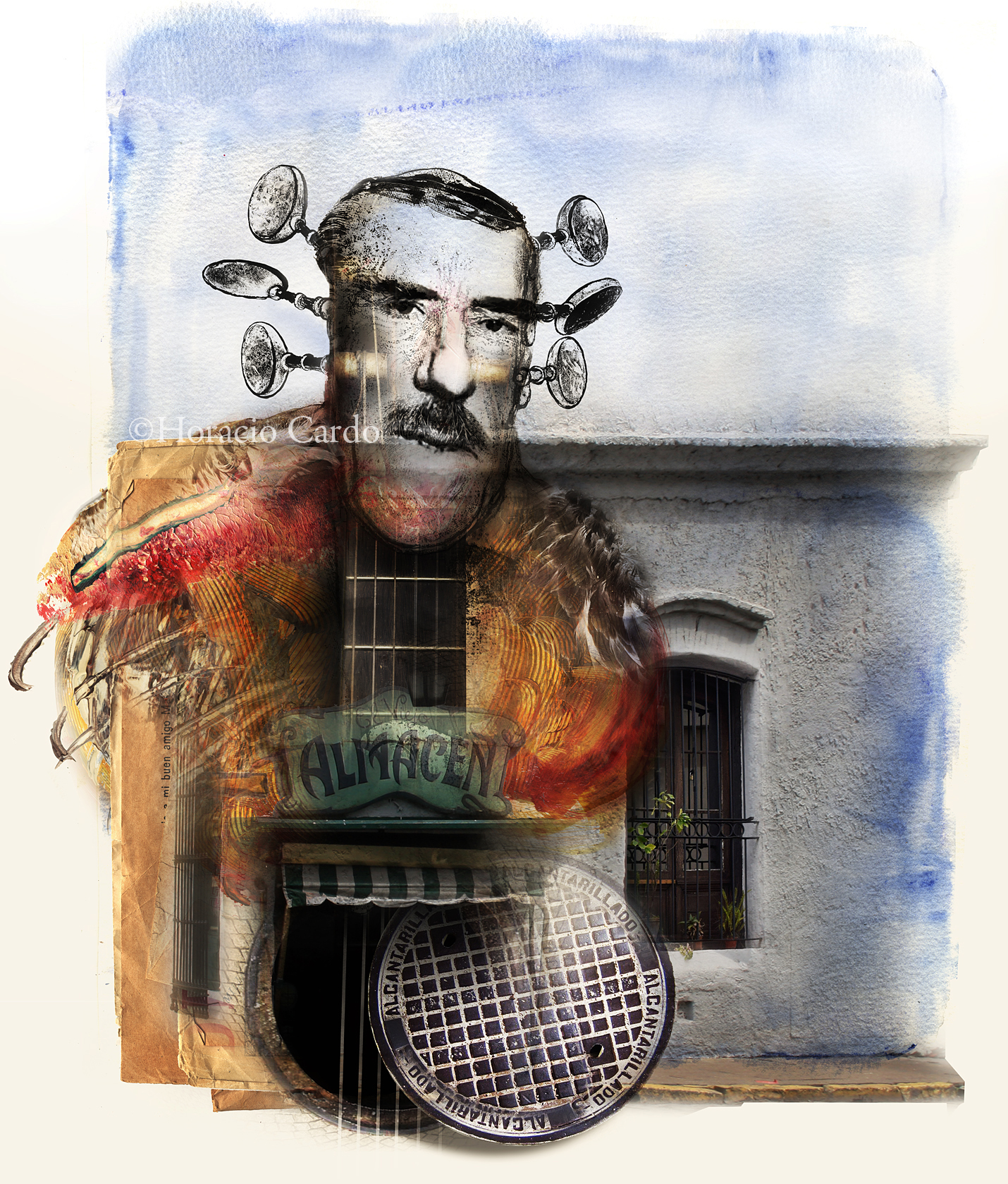
Edmundo Rivero
This “character of the Quixote born in La Pampa”, as Cátulo Castillo said, a native of Valentín Alsina, owner of a “basement voice” became one of the exponents of the reflection tango, since people stopped dancing to hear him sing. Because for a long time, the public, accustomed to singers such as Gardel or Alberto Castillo, believed that Rivero’s extremely serious voice was due to a problem in the throat.
For a long time he was victimized for having a too original special feature.
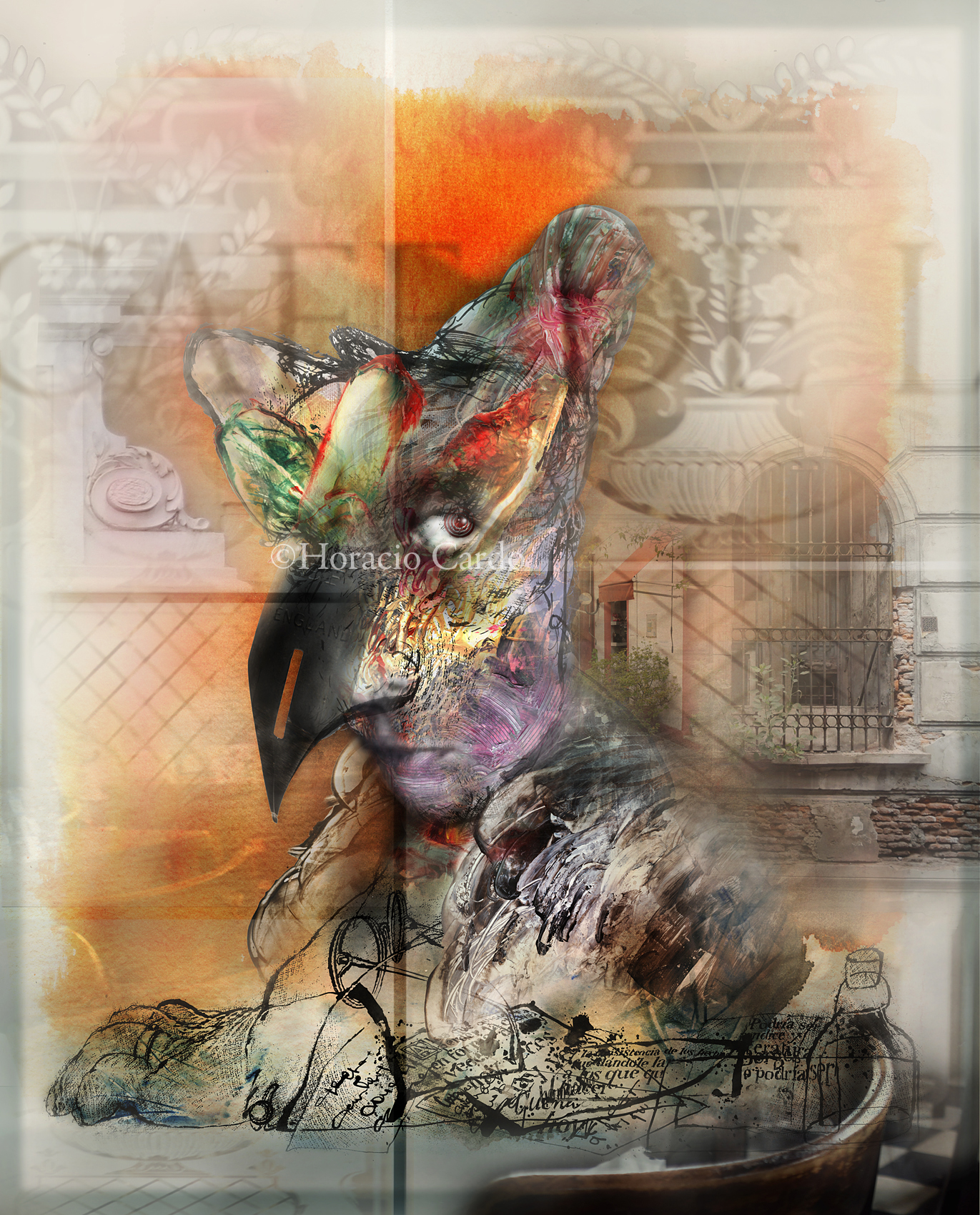
Enrique Santos Discépolo (Discepolín)
“Tango is a sad thought that is danced”
He lived a turbulent time in which the suicides abounded: Leopoldo Lugones, Alfonsina Storni, Lisandro de la Torre, Lorenzo Parravicini, Horacio Quiroga. All committed suicide by great ethical disillusions, seeing that their struggle had been sterile, as Socrates had done, and already in our days, René Favaloro. Apparently always, as Sartre said in “Closed door”, because "hell are the others who look at us". But Discépolo dared to incorporate it into his lyrics. In “Tres esperanzas” (three hopes) and then in “Infamia” (Infamy), he tackles the subject of a woman with a bad life who tries in vain to regenerate and ends up committing suicide: “... people are brutal and always hate the one who dreams,” conclude Discépolo.
Camus was one of the few great writers who dared to analyze the subject. In “Misunderstanding”, for example. And he returns to reflect on it in The Myth of Sisyphus: “There is only one really serious philosophical problem: suicide. To judge that life deserves or not to be lived. ” A final decision that does not support replicates and leaves silent who claims coherent and rational answers.
Melancholy embodies Discépolo`s most successful tangos: Cambalache, Cafetín de Buenos Aires, Tonight I get drunk, Uno, Alma de bandoneón, El choclo, Qué vachaché, Yira, yira. A porteño culture of friendship, but a constant melancholy tinged with anguish. “I was always alone with the people, as with my family”, he stated.

The house of my parents
“I return defeated to the house of my parents, each thing is a memory that is stirred in my memory, my twenty April years took me away ... youthful follies, lack of advice ...” So begins Juan Carlos Cobián the letter of one of the most popular tangos. The return, full of guilt and frustration, makes the rapporteur lament his ingratitude: “There is a deep and cruel silence in the house, and when I hit the door, like a stranger, the old servant receives me ... I will have changed so much, that the old man only by my voice recognized me. "
The protagonist wants to retrace his decision to have left, and regrets without remedy.
The concept has a significant analogy with that of the tormented poet Agustín Gagliardi, who “having lost in psychoanalysis even the precarious shreds of decency that remained, begins to disrupt his despair through the alleys, he becomes entangled in an underworld of grisettes, alcoholics, whores, and pimps, organizes “free fights” among women. Hostage of his own sexual impulses, dragging in his face the scar of evil, he travels for the last time the path of the cemetery, digs the grave and exhausted belly of his dead mother and ends up submerging forever in that swollen flesh.
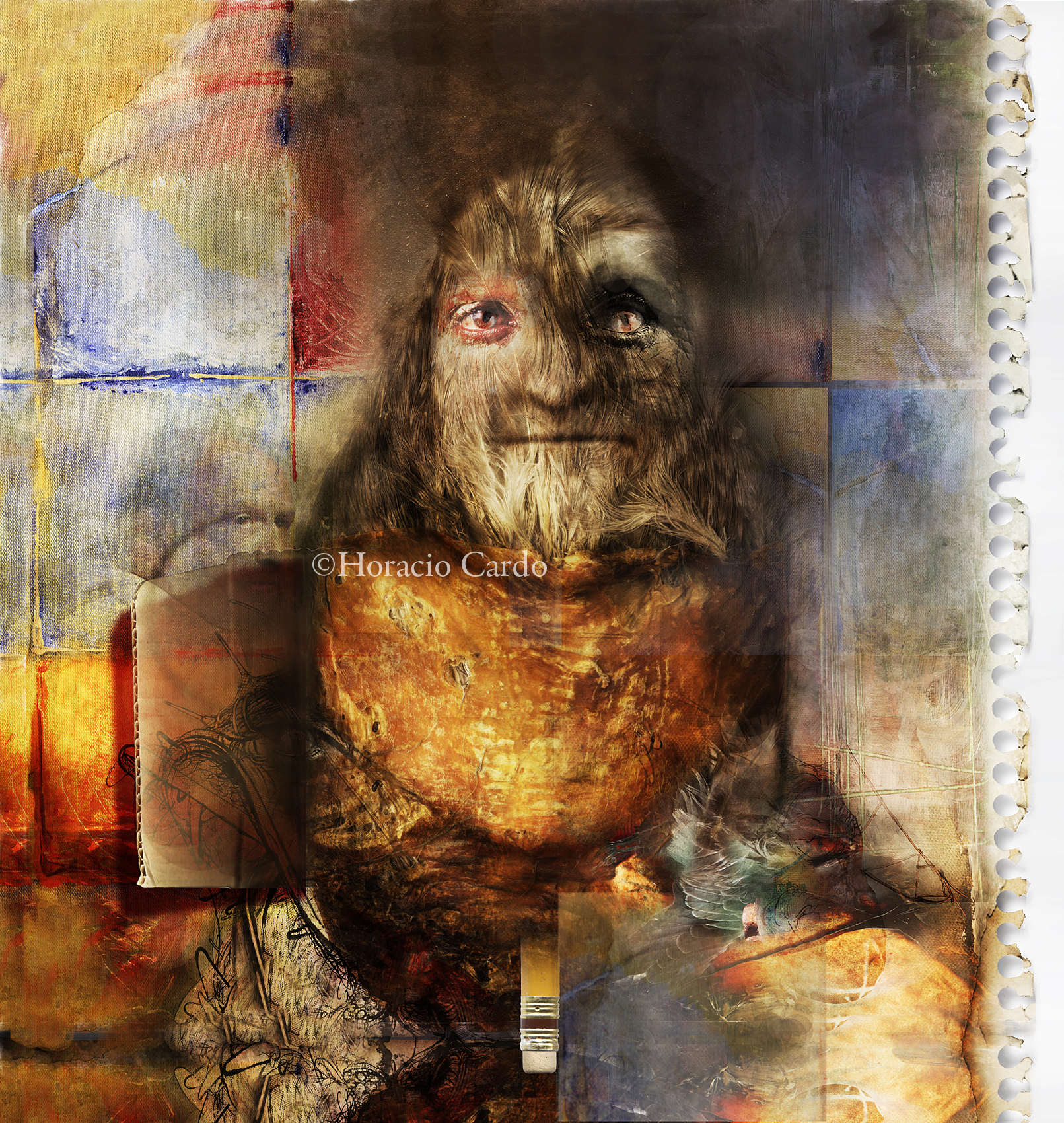
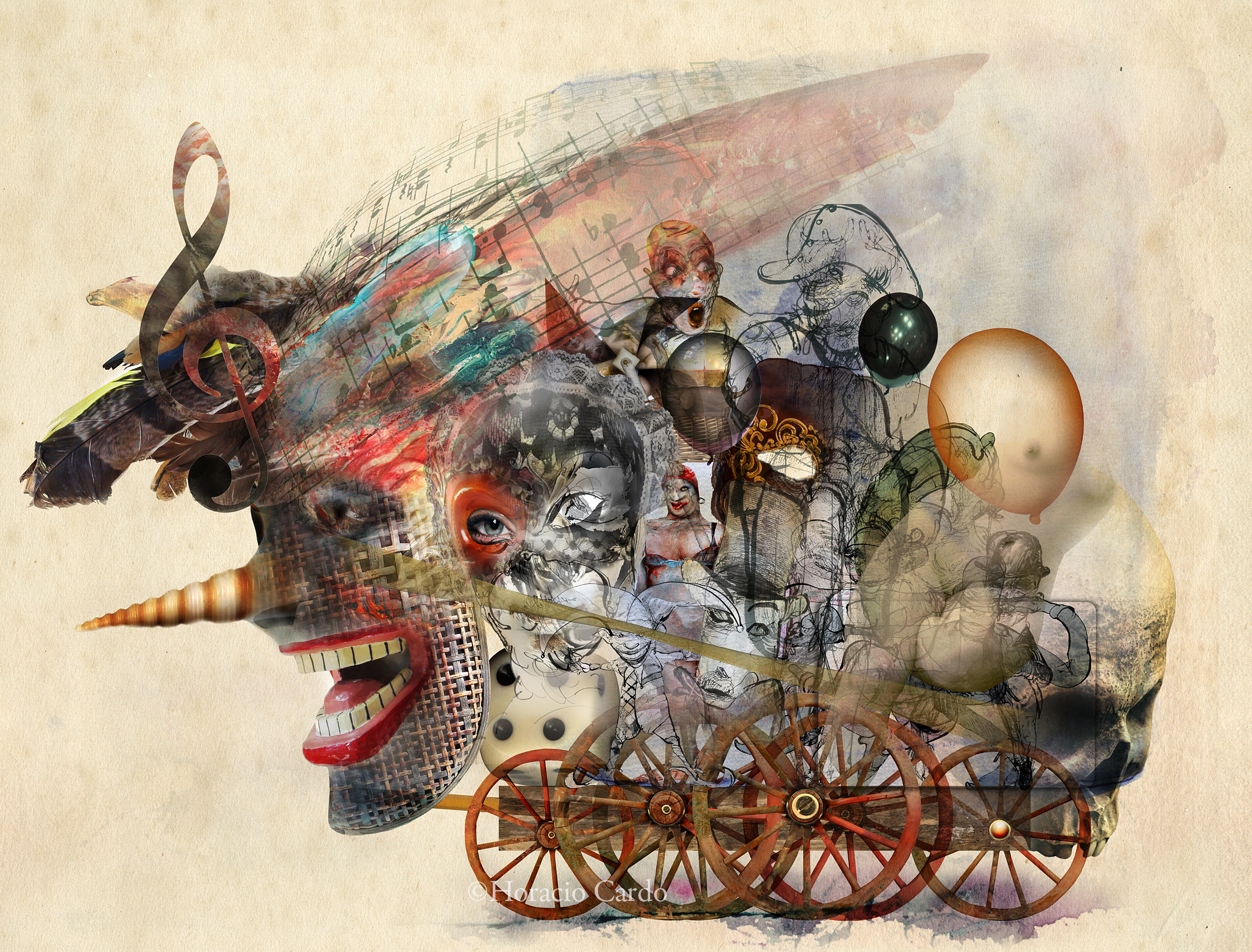
La cumparsita.
Voice coming from Carnival comparsa, La cumparsita —the popular hymn of Uruguay since 1998 by Uruguayan Legislative Power Act— is a tango originally thought as a march composed around 1915 or 1916 by the Uruguayan musician Gerardo Matos Rodríguez. The lyrics of this tango, created years later, have common roots with “Let’s follow the corso” (que siga el corso), and it reminds us that in the exaggerated and rumbrous game of archetypal characters coming from the French Comedy and the Italian Commedia dell’Arte, the show of life will inevitably continue, since “the whole year is Carnival”.
But it is only from the great interpretation of Julio Sosa that reaches its maximum drama.
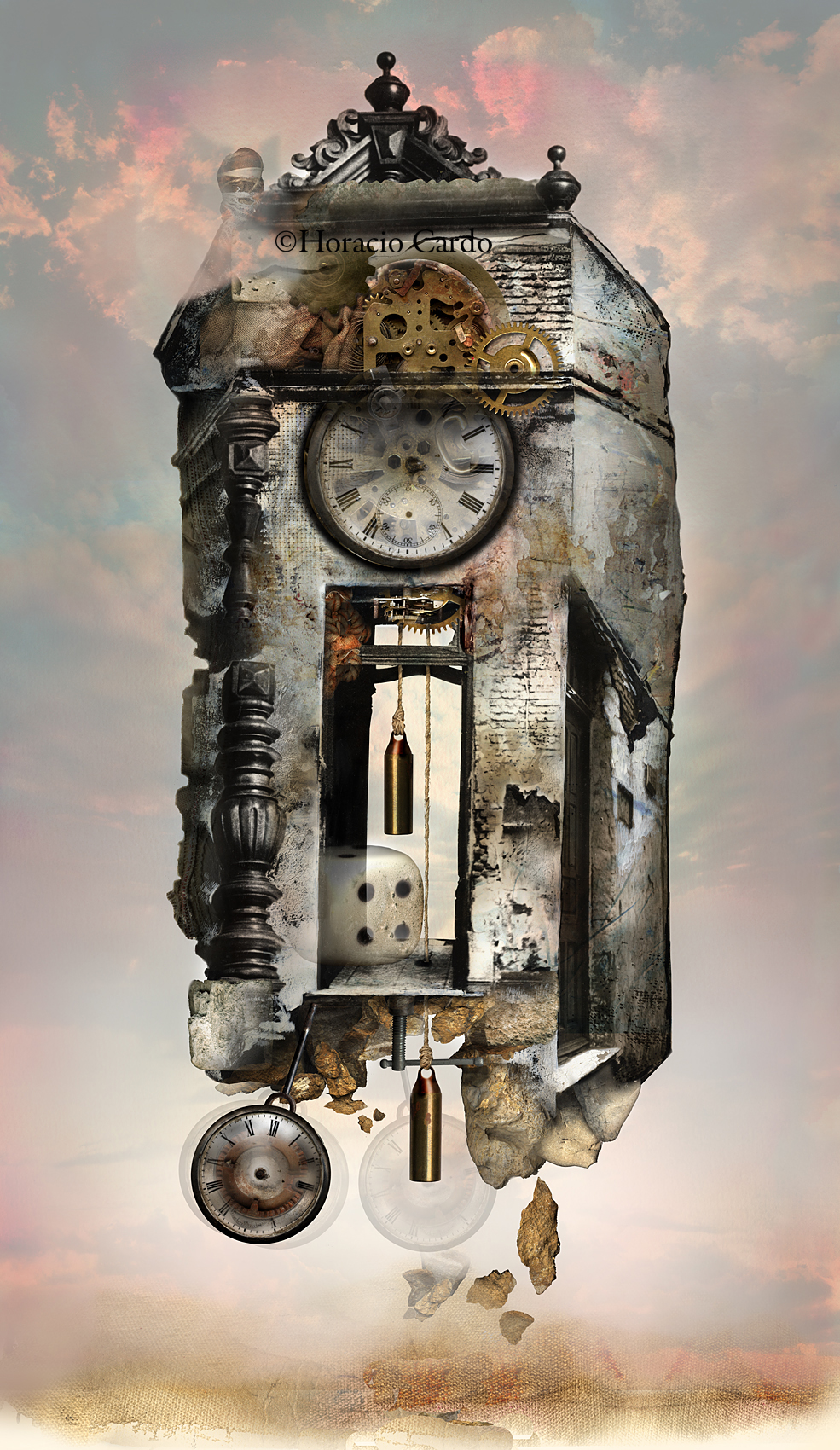
Return
"The reason for return in tango has embedded the idea of transience, of the catastrophic modification done by time. The protagonist returns with his "dream shattered" ("The forty", Garrido), "withered forehead" (Lepera) to a city, a neighborhood, a street, surely a woman, from far away and in time. He returns anguished, old, disinserted from the new reality, with fears and also with hopes (Jorge Götling). It represents the melancholy idea of the return to a time inexorably derived towards eternity, from which, the rapporteur recognizes himself among the demolished: "I will have changed so much, that the old man by the voice, only recognized me" ("La casita of my old ones ", Cadícamo).
The illustration of "Back with the withered forehead" was published in Clarín on Thursday, January 22, 1987 on the tango Entertainment page section accompanying the note by Jorge Götling, icon of Argentine journalism, which he received from the King of Spain. Spain the Don Quixote prize, on December 2, 2004. He died on August 26, 2006.
Referring to the tango, Götling said: "It's a story of three minutes that has a beginning, an argument, a character, a definition and a final one".
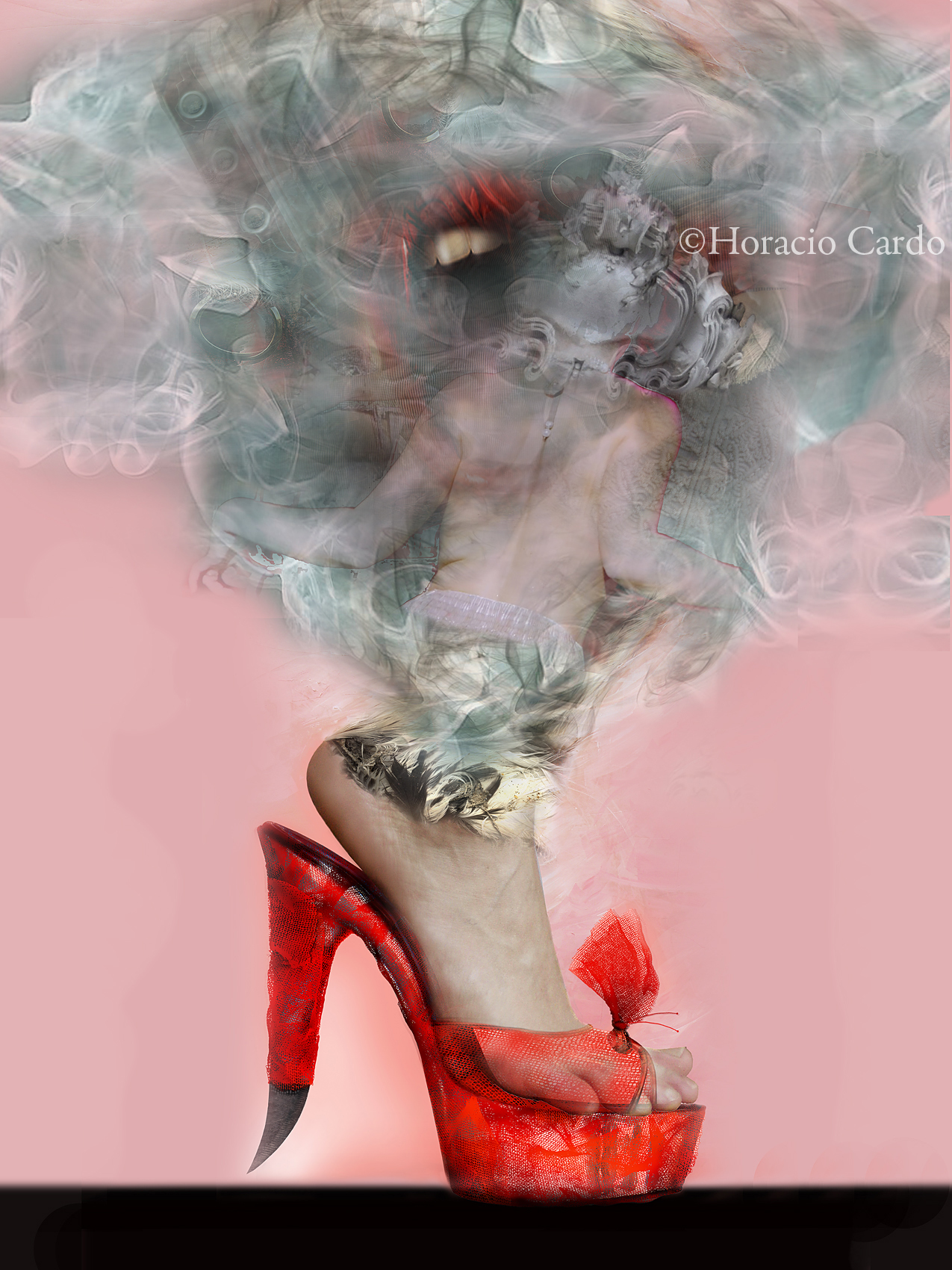
Smoke Volutes, nothing else
There is no doubt that the biggest serial killer in history was Elisabeth Bathory, that killed 616 women. Spine-chilling record, if we think about it, and difficult to surpass. This is the story of Marie Latour Legrand, more known as “Zizette”, the most sought killer towards the end of the nineteenth century, not only by men avid for sex, but also for policemen avid for glory, and sex.
The story suffered multiple versions, and ended up relating it to the lyrics of the tango "shadows, nothing more", which speaks of a finished love that has left the protagonist empty and longing (shadows, nothing else).

The mistonga muse dances the tango like no other
Celedonio Flores assured that the vernacular muse leaves happy to the tango when it gets dark, to complete with her shadow the figures produced by the compadritos.
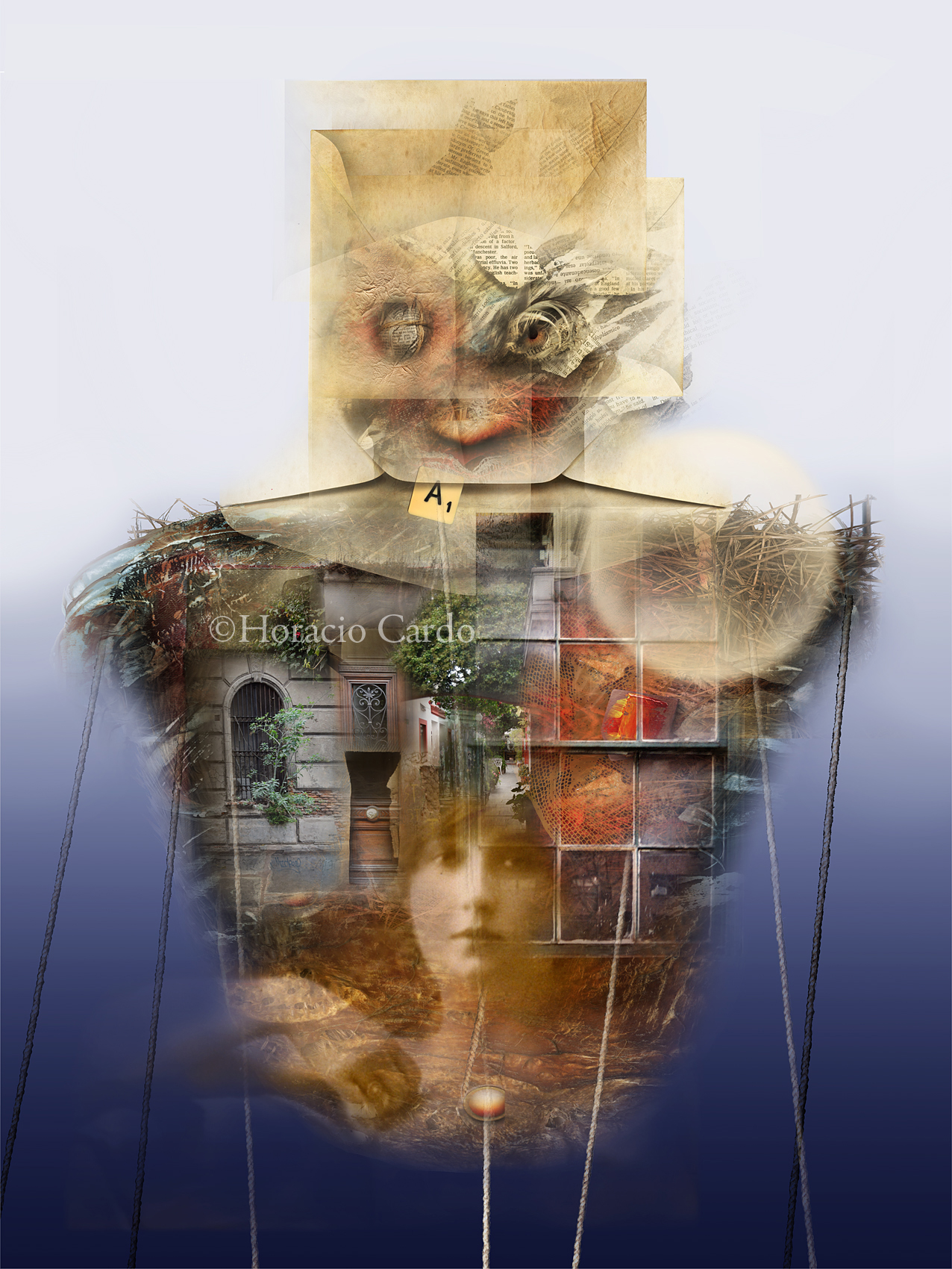
South
The first description: San Juan and ancient Boedo and all the sky ..., puts aside the buildings towards a "Heaven (Paradise) lost", reaffirmed later. Then comes an enumeration of great symbolic content, wreathed with nostalgia. the yellow warehouse light wriggling behind the fogged glass, and then the poet joins the description being reflected in the stained glass window, waiting to meet his young love and continue his march under the stars of that primordial sky. I heard this poem in different periods of my life, and I felt strongly the author's presence at his door at the end, the open envelope of that intimate mail from where his hand clings to the splendor of his youth, his first girlfriend, with whom runs through that body ridged with notches. And despite having visited that memory so many times, that defeated man finds it nested with candor. All the words that since then he tried to write to his love, were necessary to learn to say the latter.
The lyrics are of such emotional charge that according to Héctor Stamponi, Ernesto Sábato said that he would give all his literary work in exchange for the privilege of being the author of Sur.
Borges said that the south was the secret heart of Buenos Aires, not the ostentatious center that we show tourists. “When I think of Buenos Aires, it was that of low houses, with patios and halls, of cisterns with a turtle and windows with bars.”

Jörgen’s Tango
Based on Jörgen’s knife legend. “…By means of an unexplainable dream, Jörgen introduced himself to Isabel and led her to the Tango, where they glided in a marginal, almost indecent revery; at dawn he dragged her to the sordid seclusion of his furnished room and, desperate, possessed her with bestial lust, amid the fragrance of honeysuckle under an enormous moon. On the following nights an uncontrollable passion carried them through the city…”
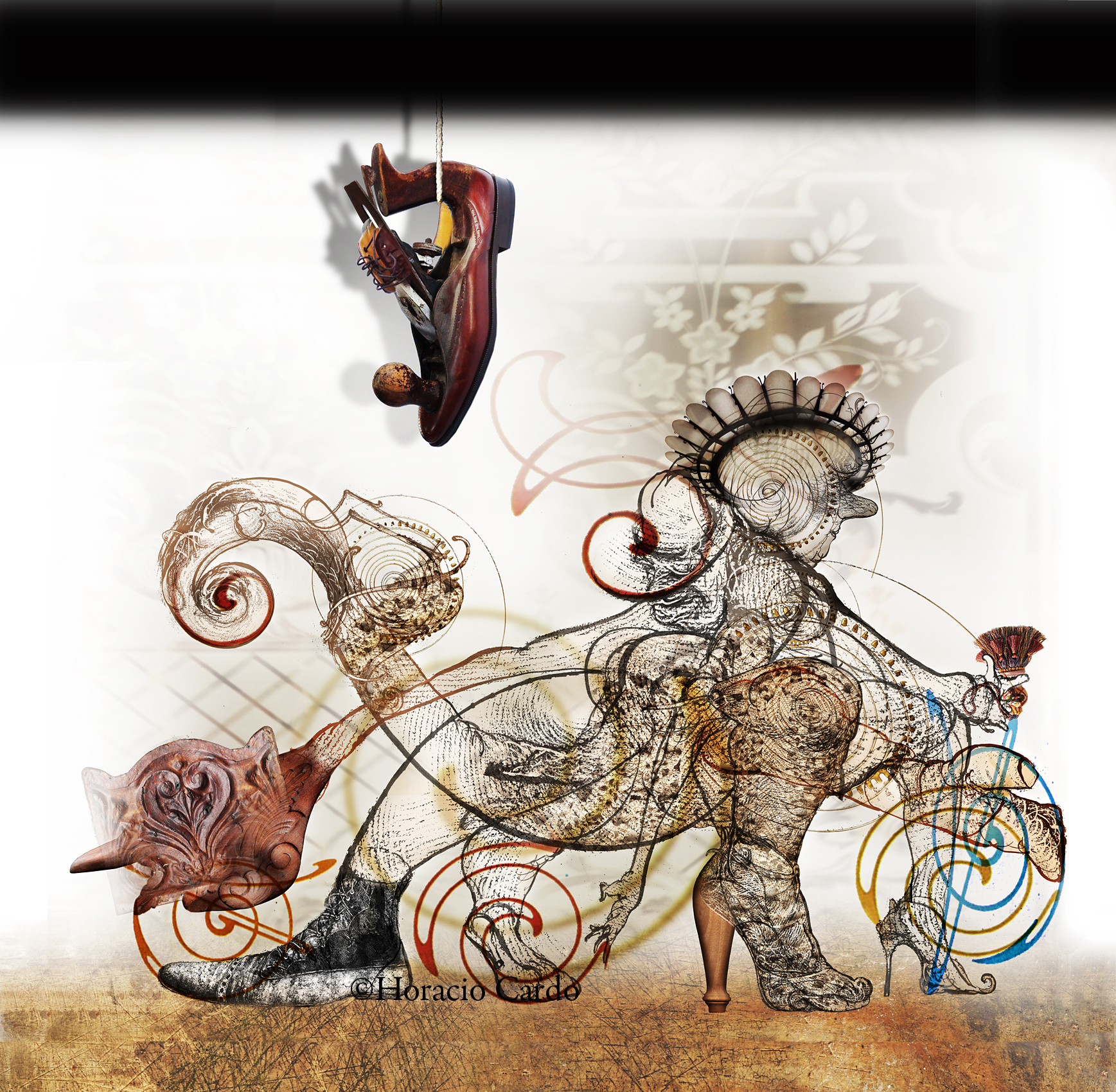
"El firulete" (Tango with ornaments)
In what seemed to be the final decline of tango, overwhelmed by the international popular music, Mariano Mores composed the tango milonga "El firulete" -in homage to Alfredo Bevilacqua- with lyrics by Rodolfo Taboada, that Julio Sosa turned into a true success for the time. The first record of this compadrona song had been in charge of the Quintet Pirincho, by Francisco Canaro, in 1958. Then Julio Sosa and Beba Bidart took him to the cinema, starring a spectacular dance show full of cuts and ravines, where the dancers made gala of the famous phrase "get chip of the floor", filigree that recalled the feints of the cutlers in duels and would be incorporated into the sport by soccer players of the Rio de la Plata with the characteristic "gambeta".
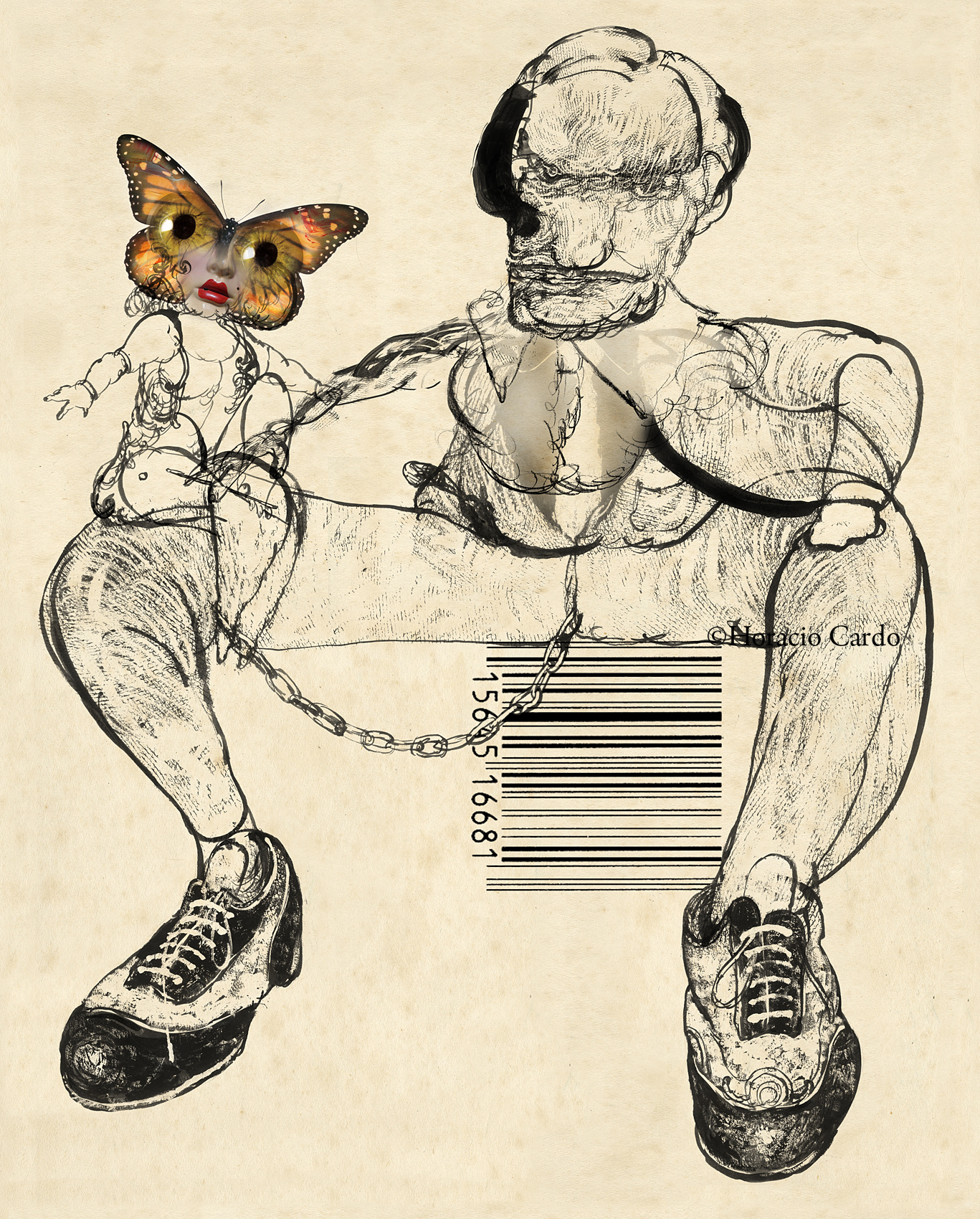
El cafishio
The “fiolo”, “cafiolo” or “cafishio”, cutler (remember that they were called “cirujas” -or surgeons-, for their skill with the knife), coward and pimp, exploiter of women, also called “840” (by the edict condemning that practice), of some woman who forced prostitution, has its parallel in the English voice “stockfish”, dry fish, which refers to the cargoes of trafficking women.
Some criollos maintained a strange sentimental relationship with their companions —called yiros or loras— who were forced to prostitute themselves, a strange society brilliantly painted by Borges in his story “La intrusa” (the outsider), where he tells the story of two brothers, the Nilsons or Nilsen, brave men from Turdera, and his concubine. These so-called sex workers are also mentioned in the lyrics of some tangos, such as “Cara y Ceca”, by Homero Expósito.

El chamuyo
In the Argentine slang, the chamuyo is the conversation of a man who entangles a woman to take her to bed, although it is also used to say that someone is giving himself importance with not too clear intentions.
Borges mentioned that once Roberto Arlt was accused of his ignorance of lunfardo (slang). "Well," he said, "I grew up in Villa Luro, there in the outskirts, next to the poor people, among the bad guys, and I did not have time to study the lunfardo."
"I have been a friend of many outsiders, even of cutlers," said Borges, "and I have never heard them say a word in lunfardo."
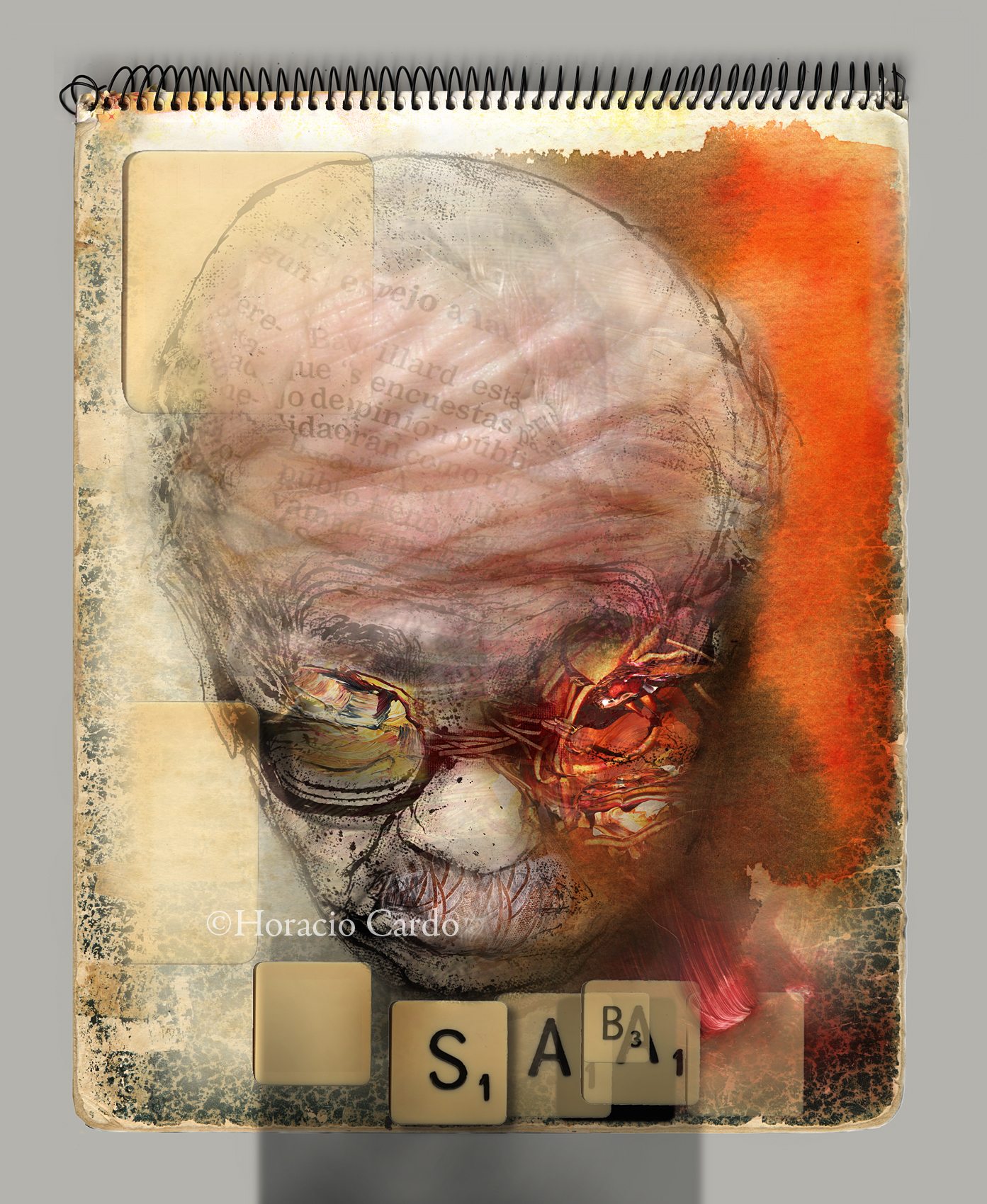
Ernesto Sábato
"In this country of opponents, every time someone does something, immediately thousands of critics sprout that demolish it with sadistic thoroughness."
"The millions of immigrants who rushed into this country in less than a hundred years", he continues, "not only engendered the two attributes of the new Argentine that are resentment and sadness, but prepared the advent of the most original phenomenon of the Río de la Plata: the tango".
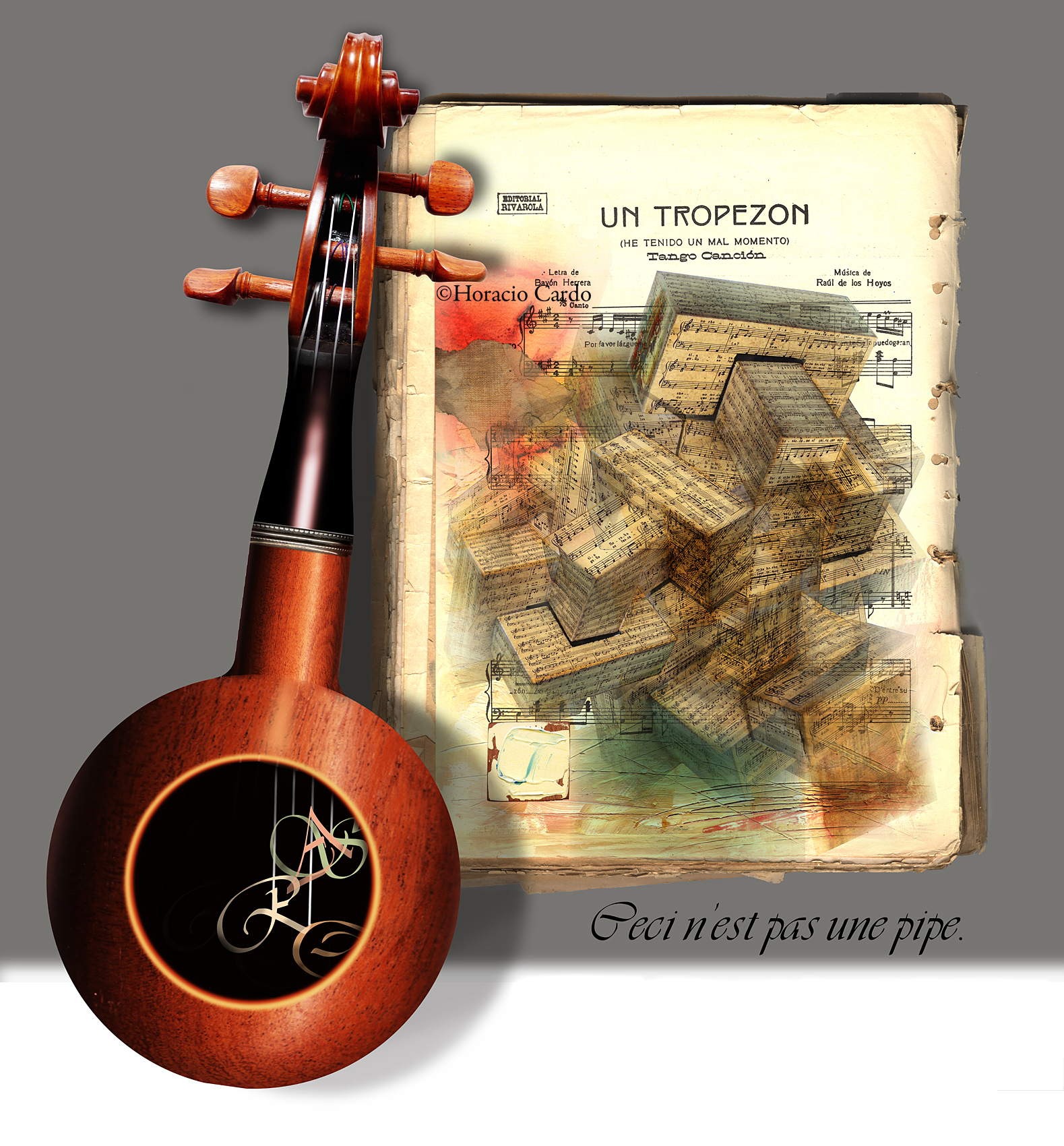
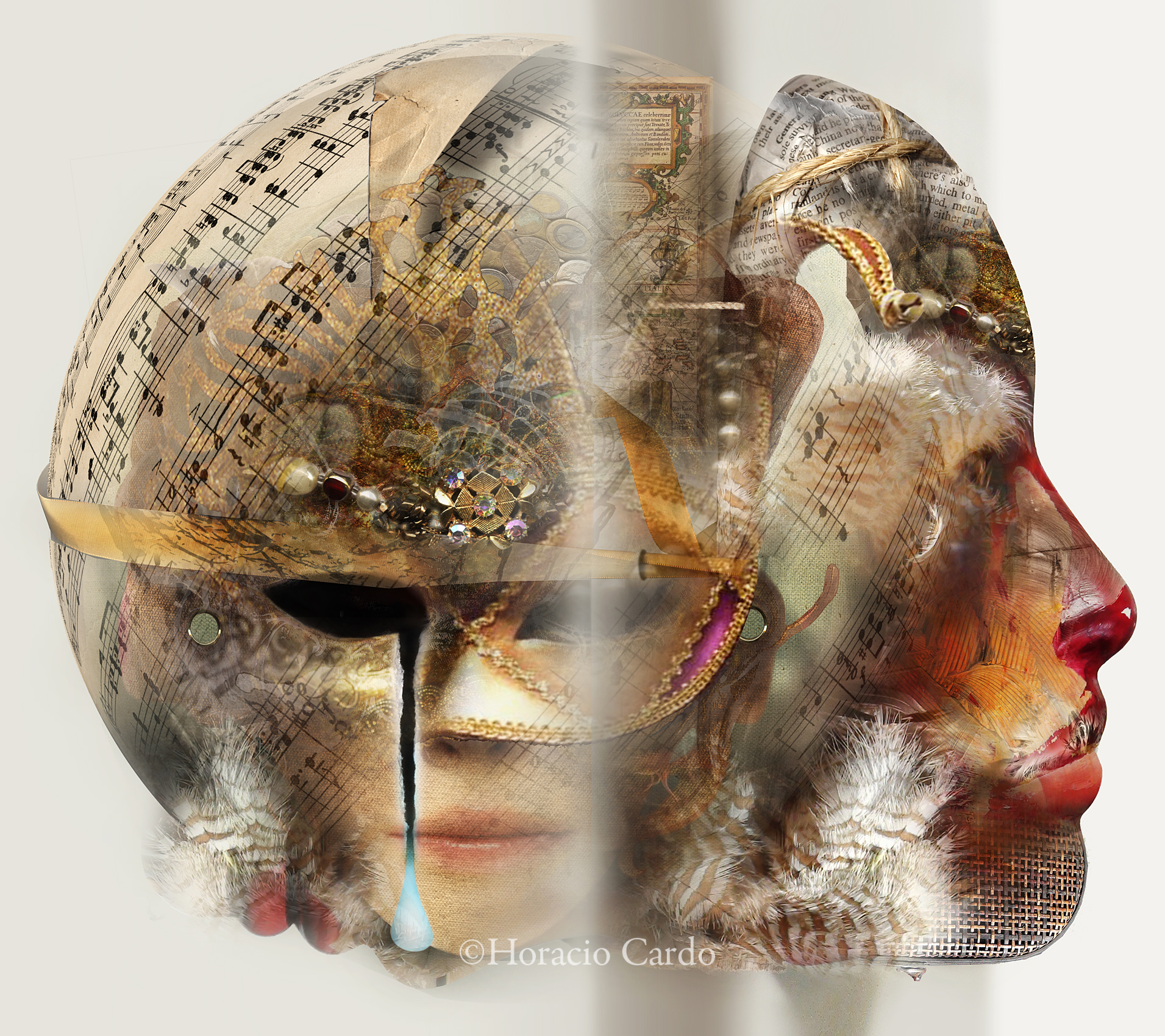
Colombina
Colombina (from the Latin ‘columba’, pigeon) is the female character with greatest presence in the Commedia dell’Arte, and one of the main ones in tango.
It happened in 1525, between Lille and Paris, when Margarita de Navarra, sister of King Francisco I of France, sheltered the sect of the French libertine Recullier. In exchange, in a special ceremony, the Dutchman David Joris, who practiced moral anarchy, gave him a mask of those used in the orgies of the Castle of Flers, where he practiced the so called by Martin Luther “Pecca Fortier”. These masks, the only garments worn by attendees, had the property of leveling social differences and opening access to pleasure for all diners alike.
It was the custom that these masks would be hung after the meetings, and that those who attended the next one would place themselves by whim or chance the mask they would use. Centuries passed, the Castle underwent several restorations, and in the last, in 1935, it was decided to remove the masks stored in a large trunk, and place them side by side in the room where they had been used.
With great surprise, one of them was missing, and was inexplicably found in a baalare of Baigorria street in Buenos Aires, after the carnival of 1936 *, and inventoried today as “the mask of repentance” (Le Masque de la repentance) —that many attribute to Margarita—, which appeared torn by a tear that time did not manage to repare.
(*) Gardel’s death had occurred the previous year. The fact receives special interest due to the existing relationship with one of the tangos interpreted by him, “Que siga el corso”, by Anselmo Aieta and Francisco García Jiménez (“That Columbine —the marquesse, that serpentine of crazy laughter that painted her mouth for kissing a clown— she put smoke in her dark circles from the bonfire of his heart").
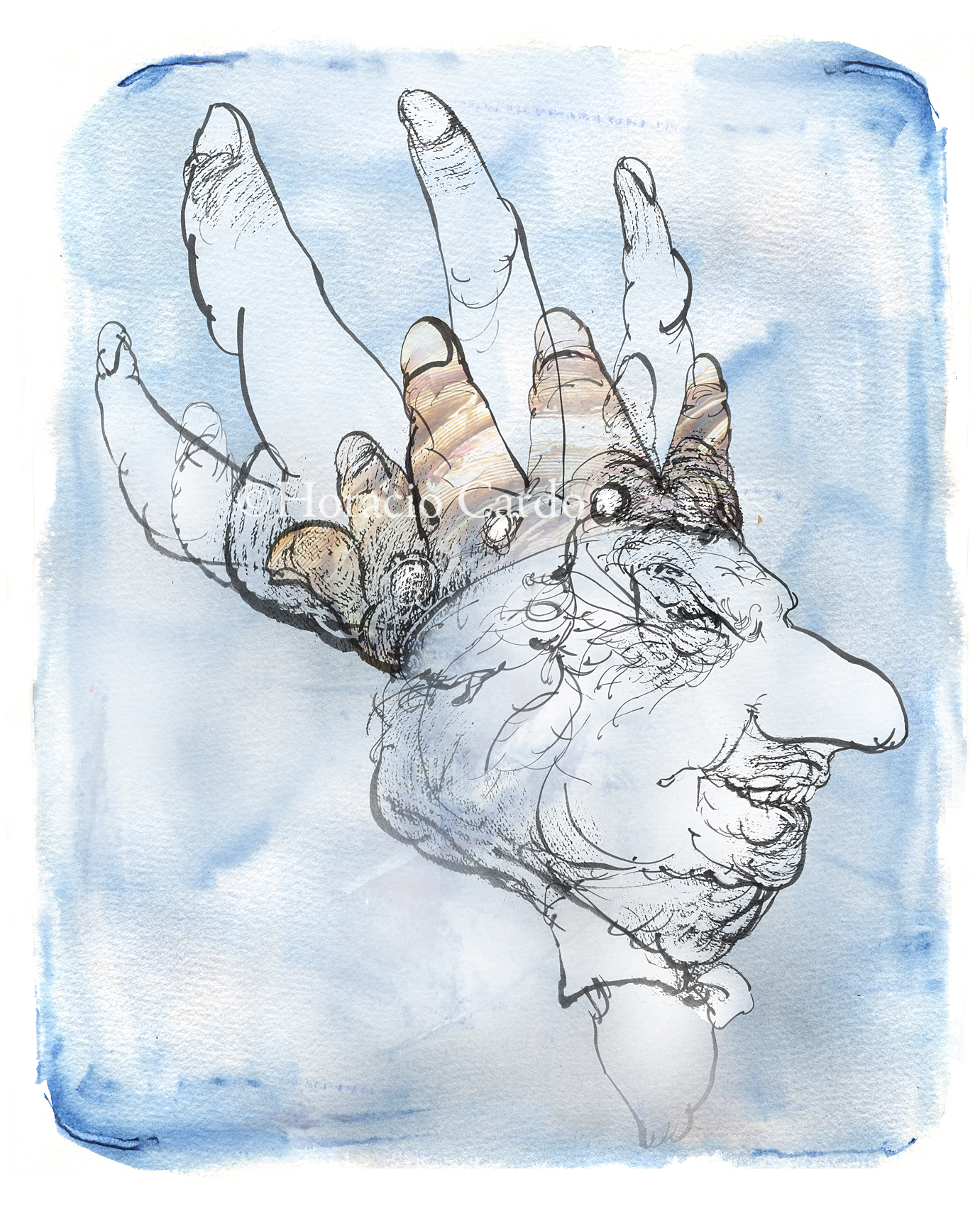
Mariano Mores
Elected as the “Best Tango Composer of the Century”, Mariano Mores (Mariano Alberto Martínez), born in Buenos Aires on February 18, 1918 and died on April 13, 2016, was a notable pianist, composer and Argentine conductor, author of true classics of the genre (“Uno” and “Cafetín de Buenos Aires”, with Enrique Santos Discépolo, “On this gray afternoon” and “Gricel”, with José María Contursi, and many others: “Cuartito azul”, “Taquito militar”, “El patio de la morocha”, with Cátulo Castillo, etc). He produced comedies for television and acted in cinema, and in many of his productions he surrounded himself with his family, of which he made a cult.










































